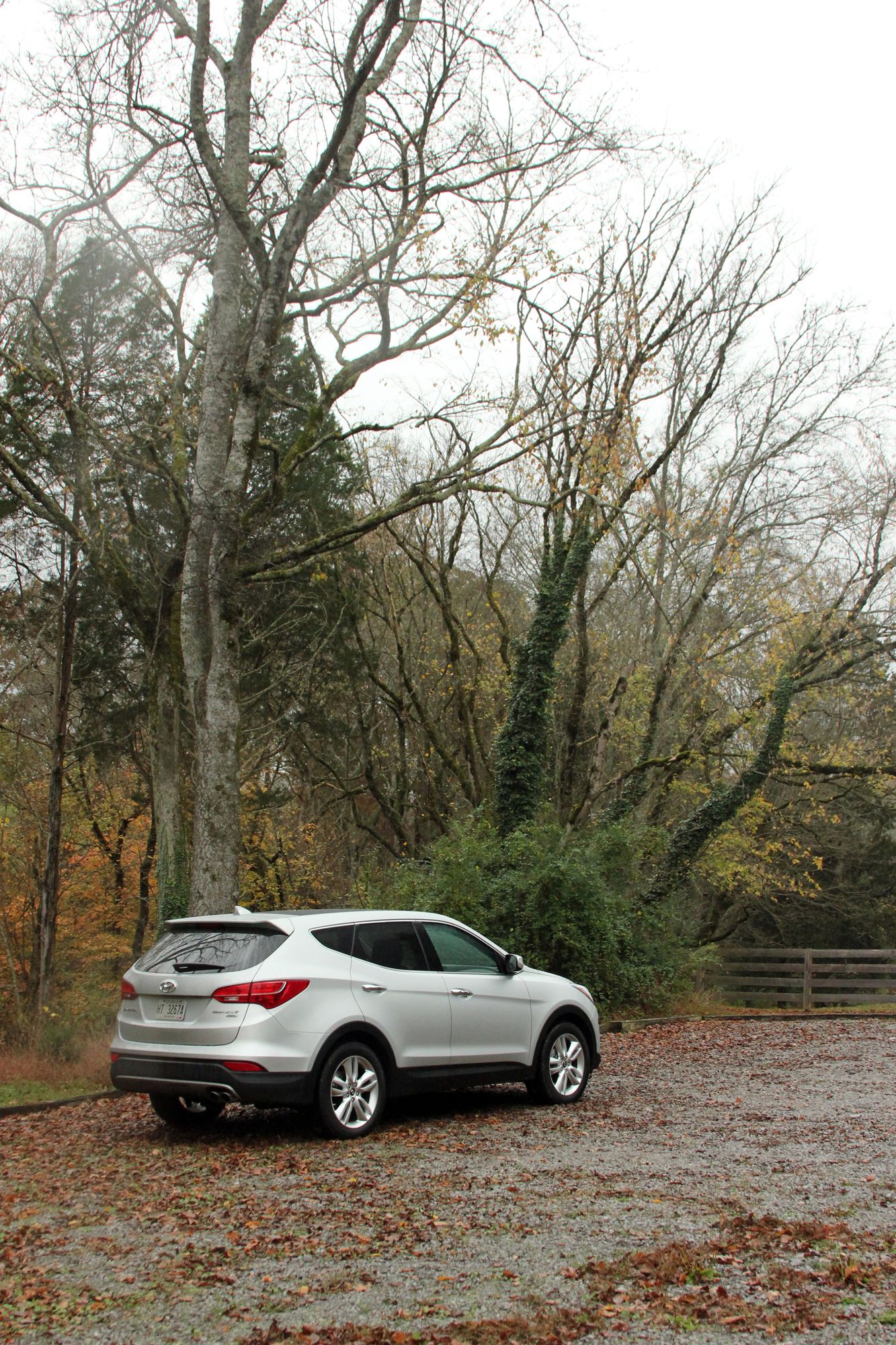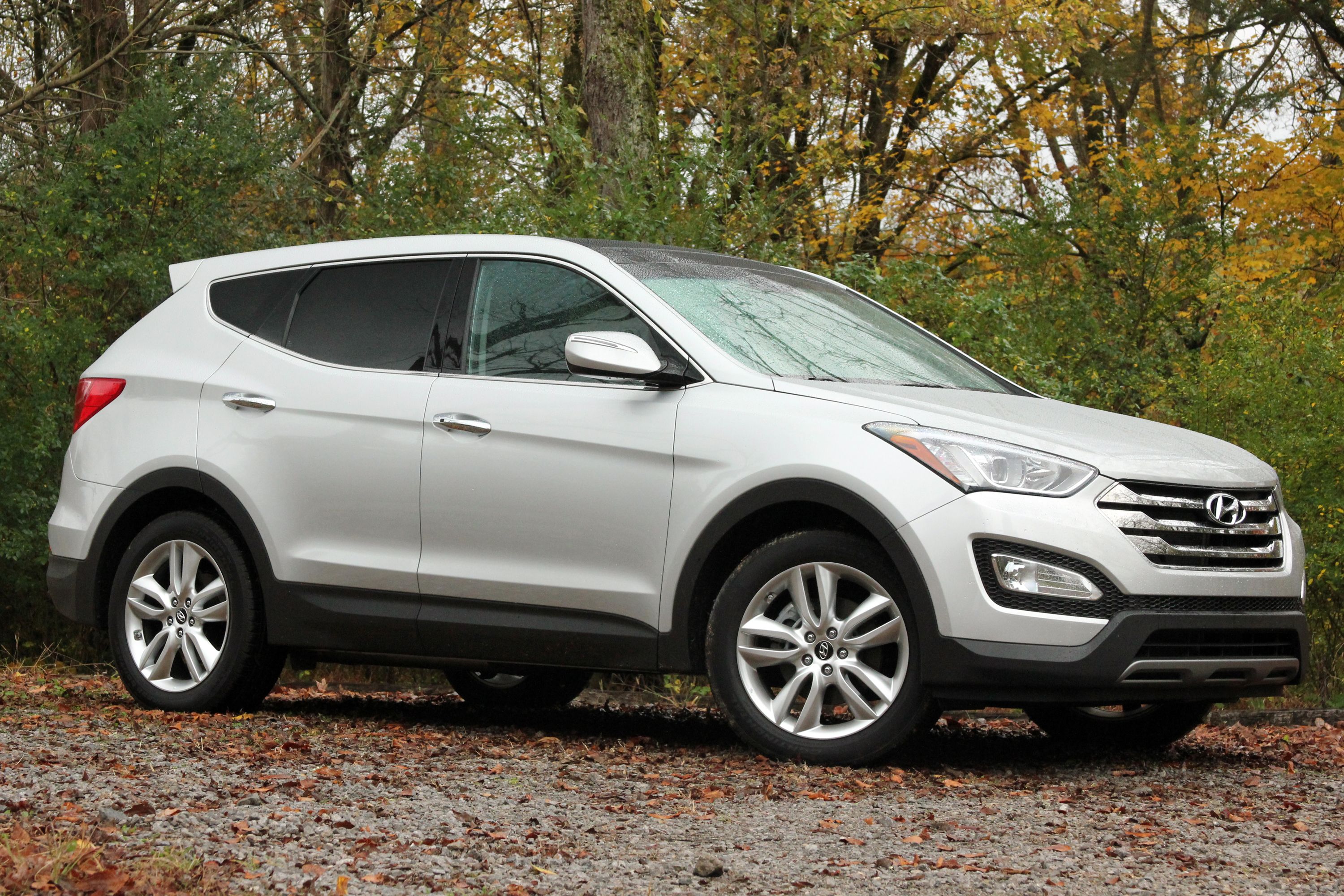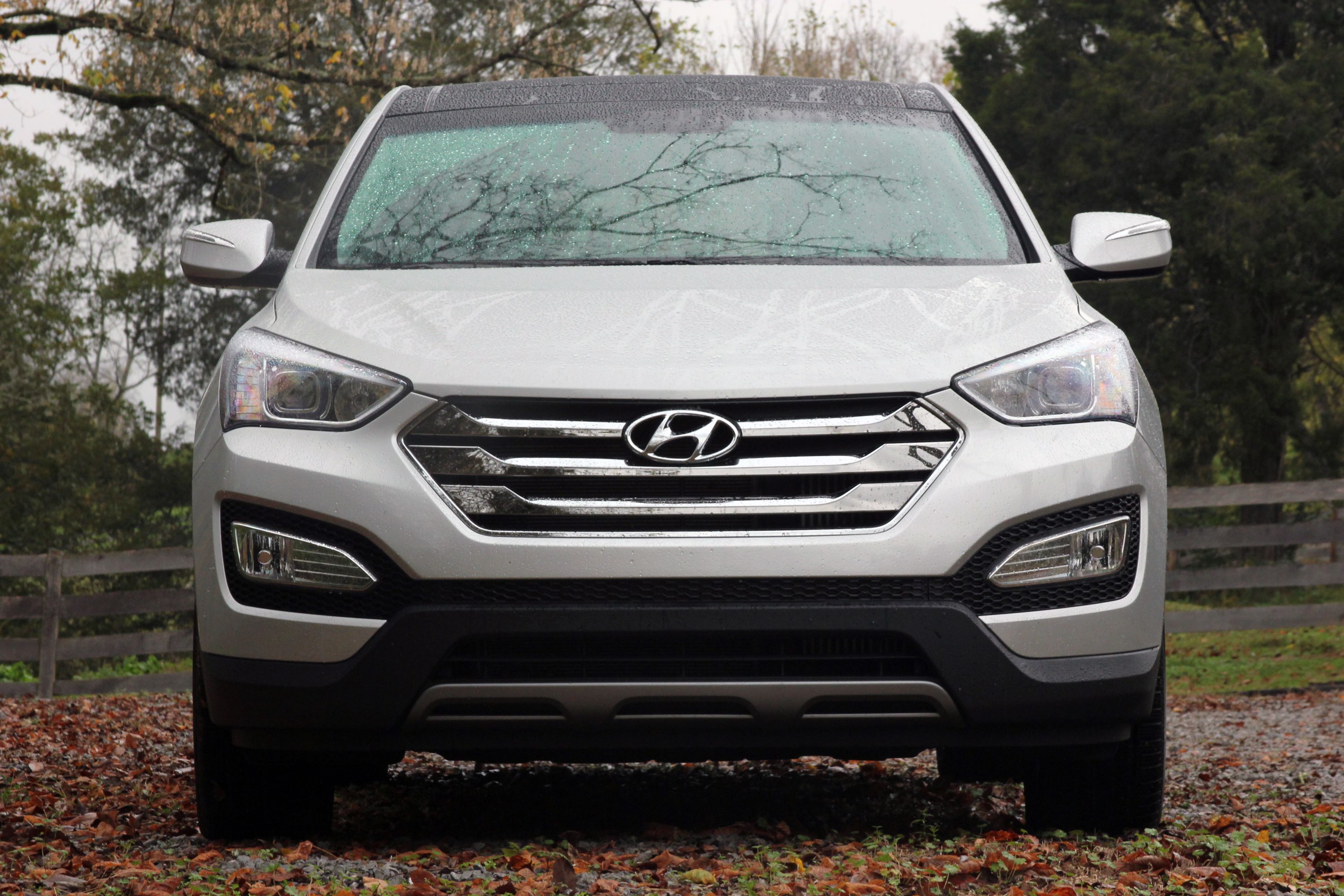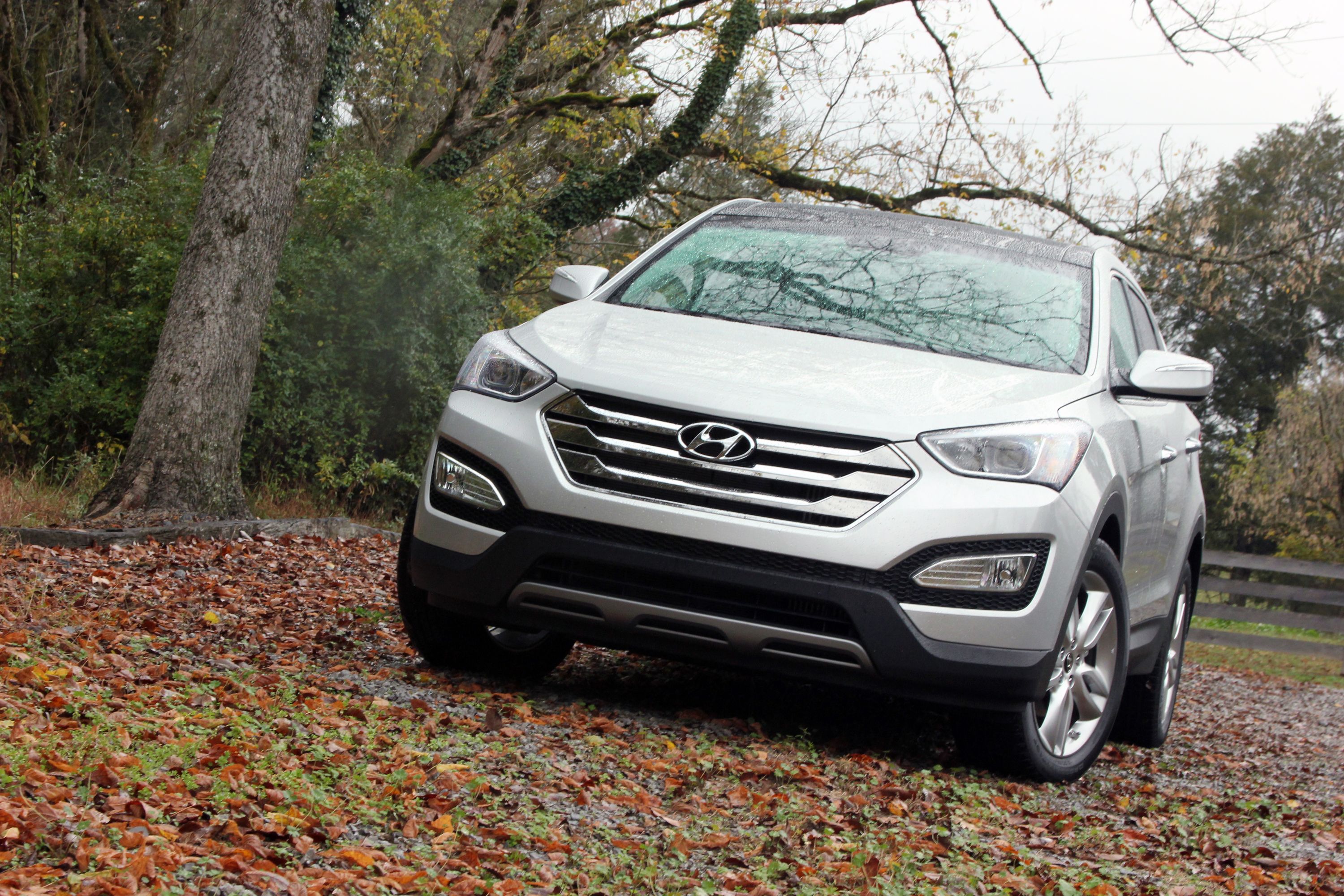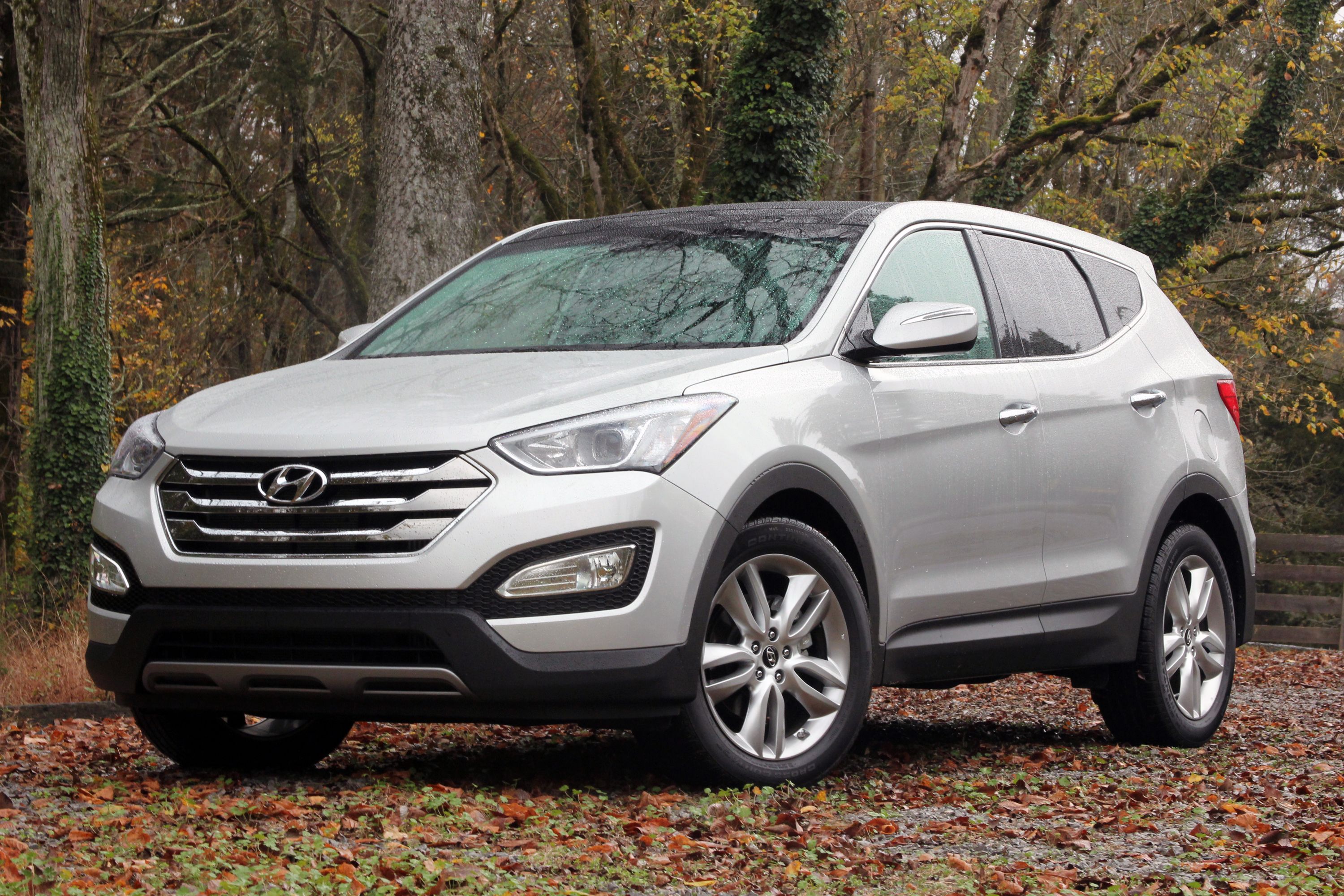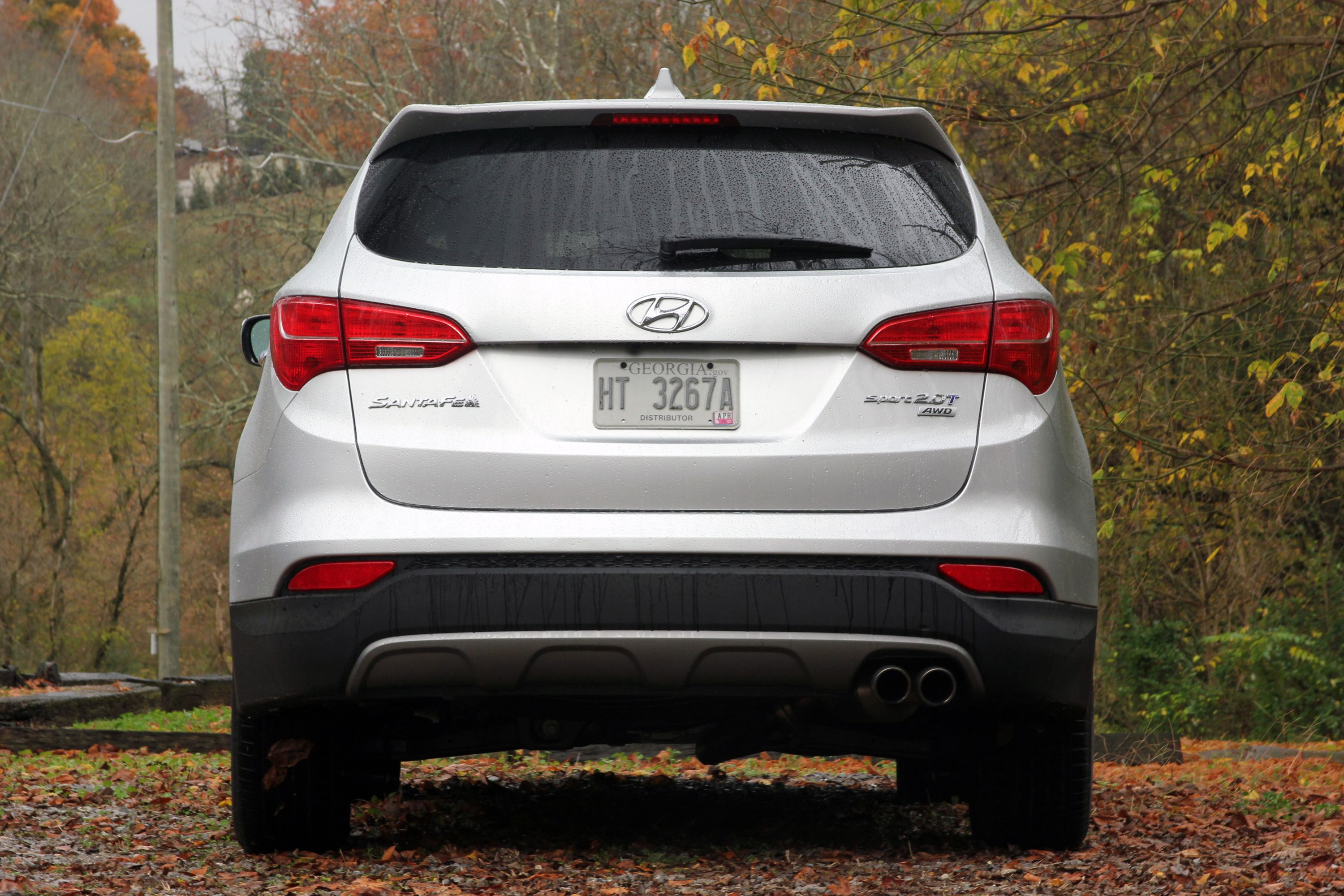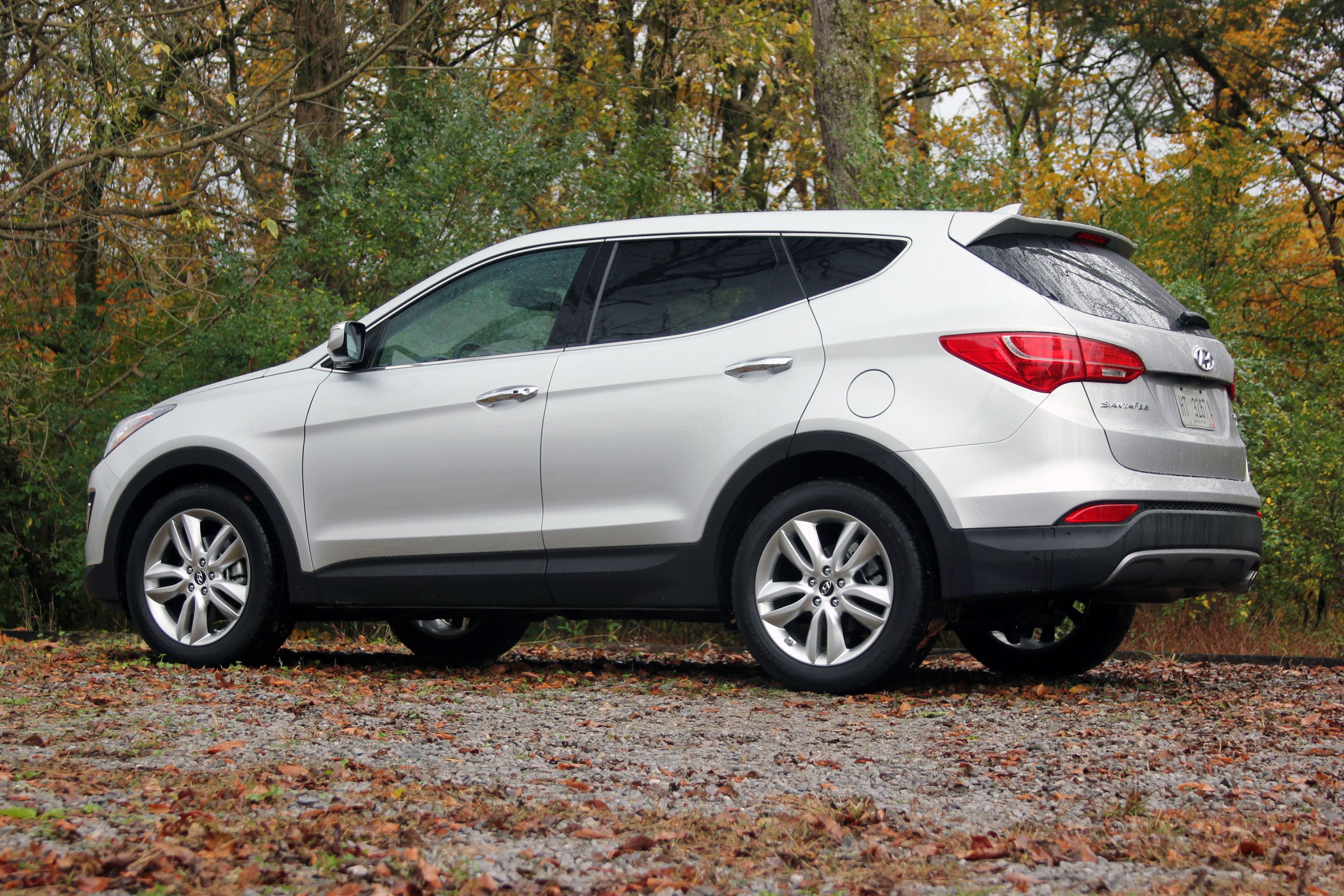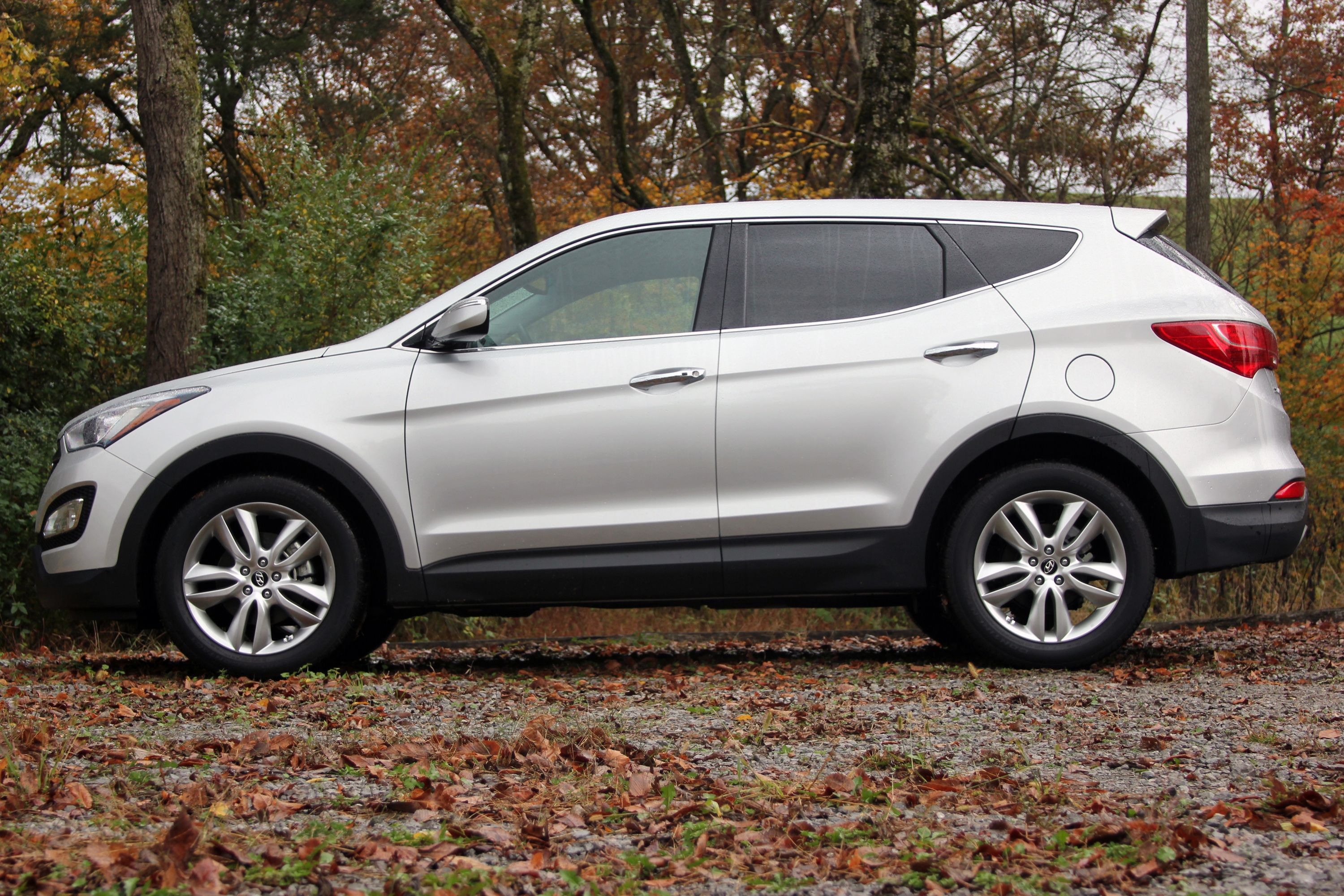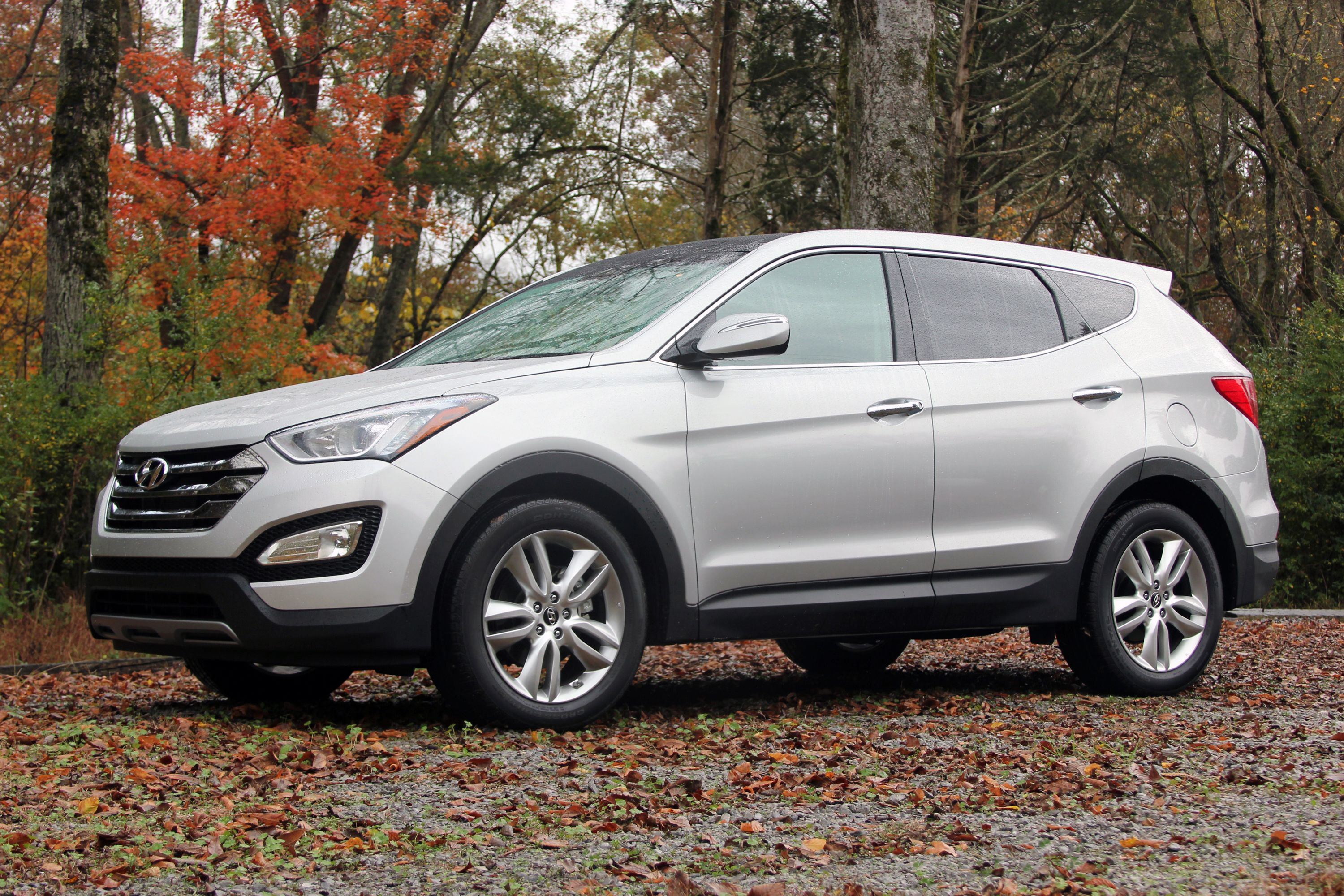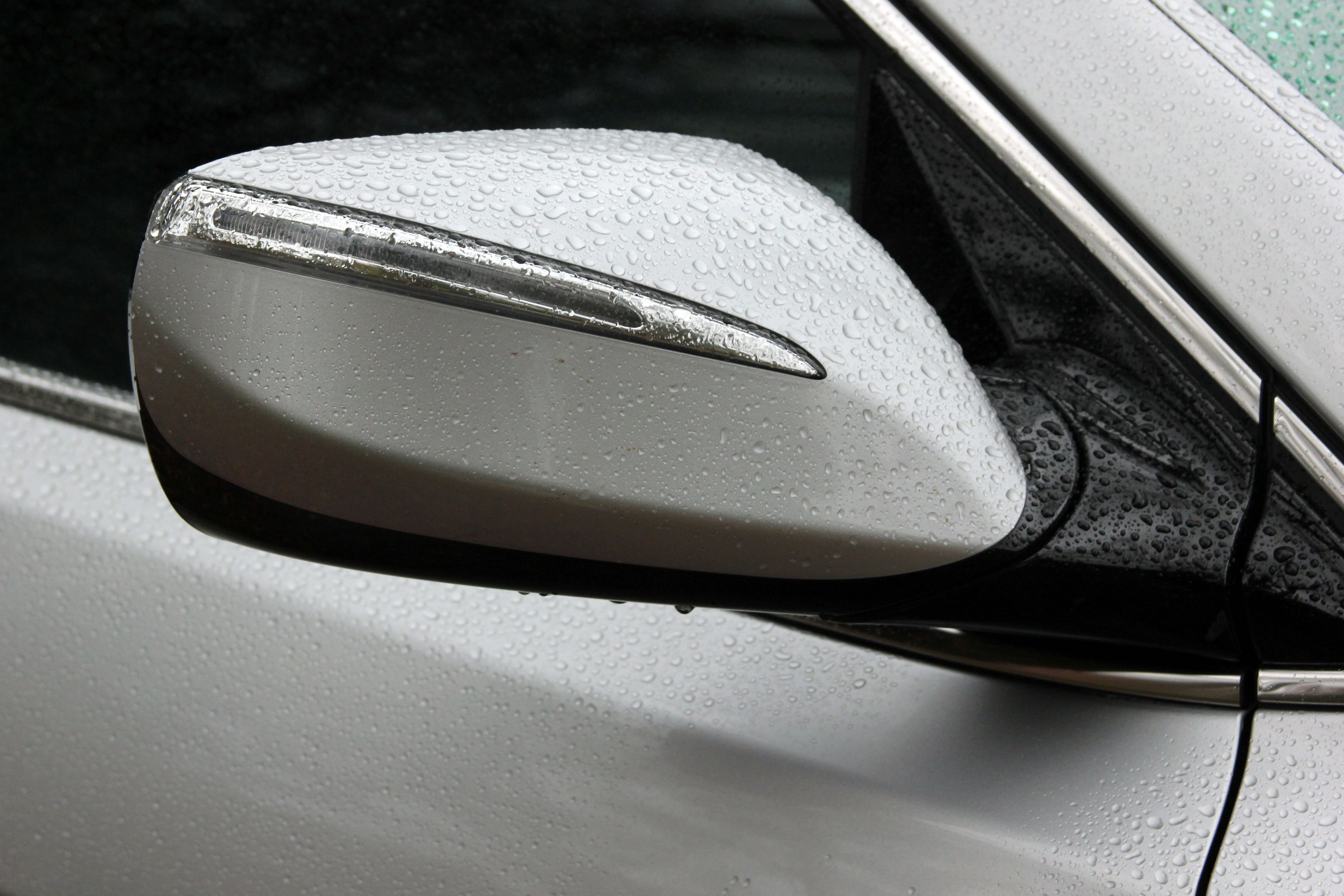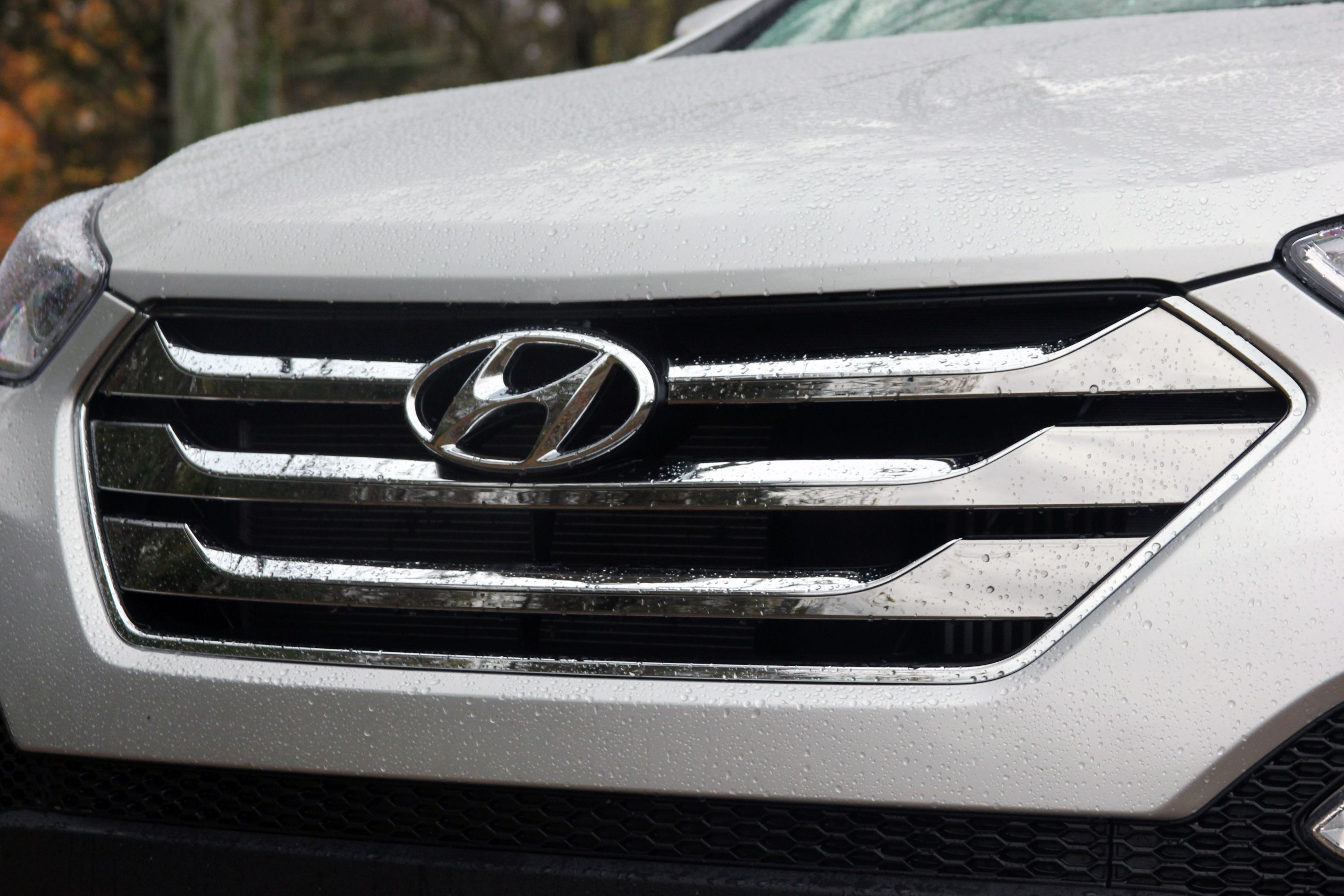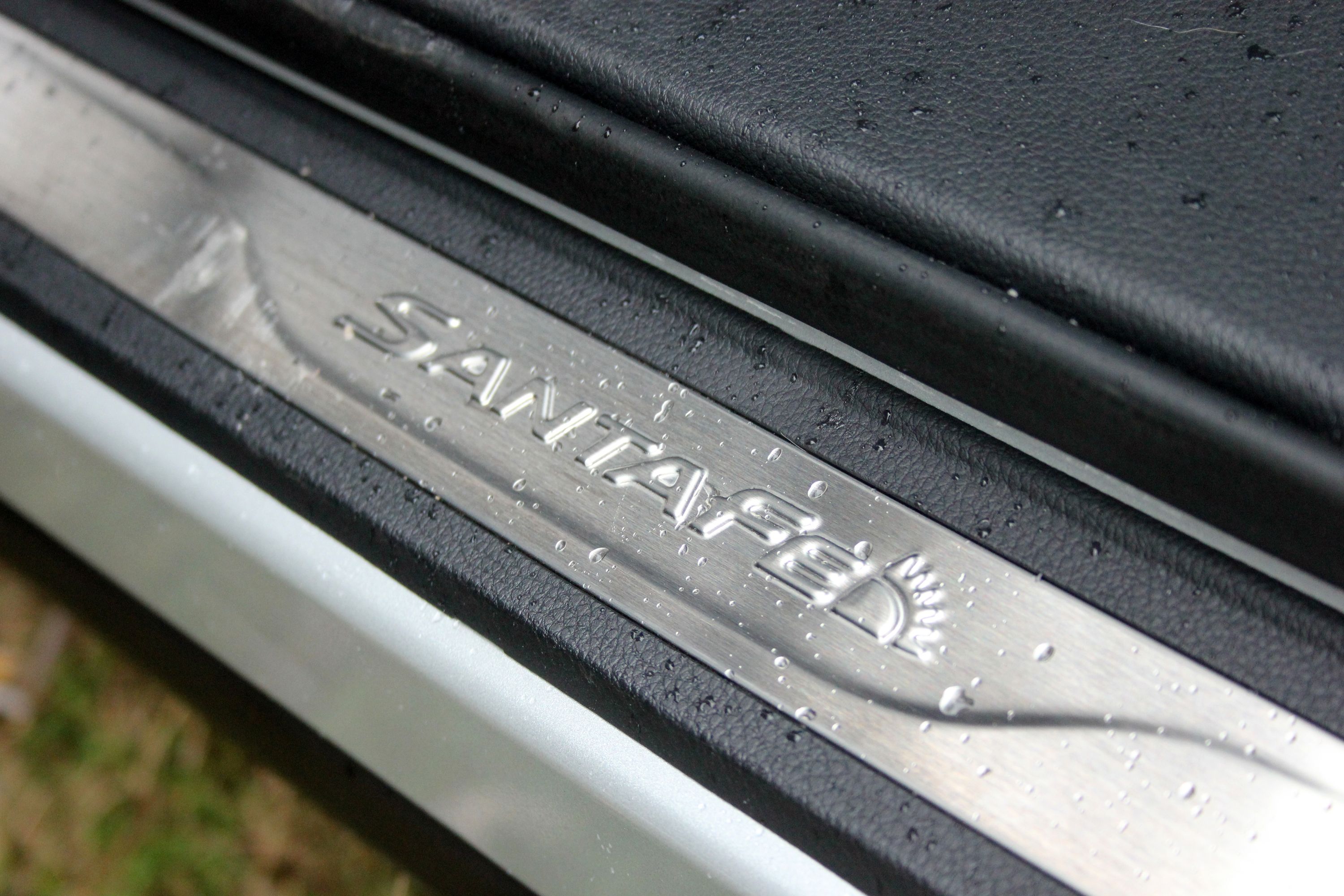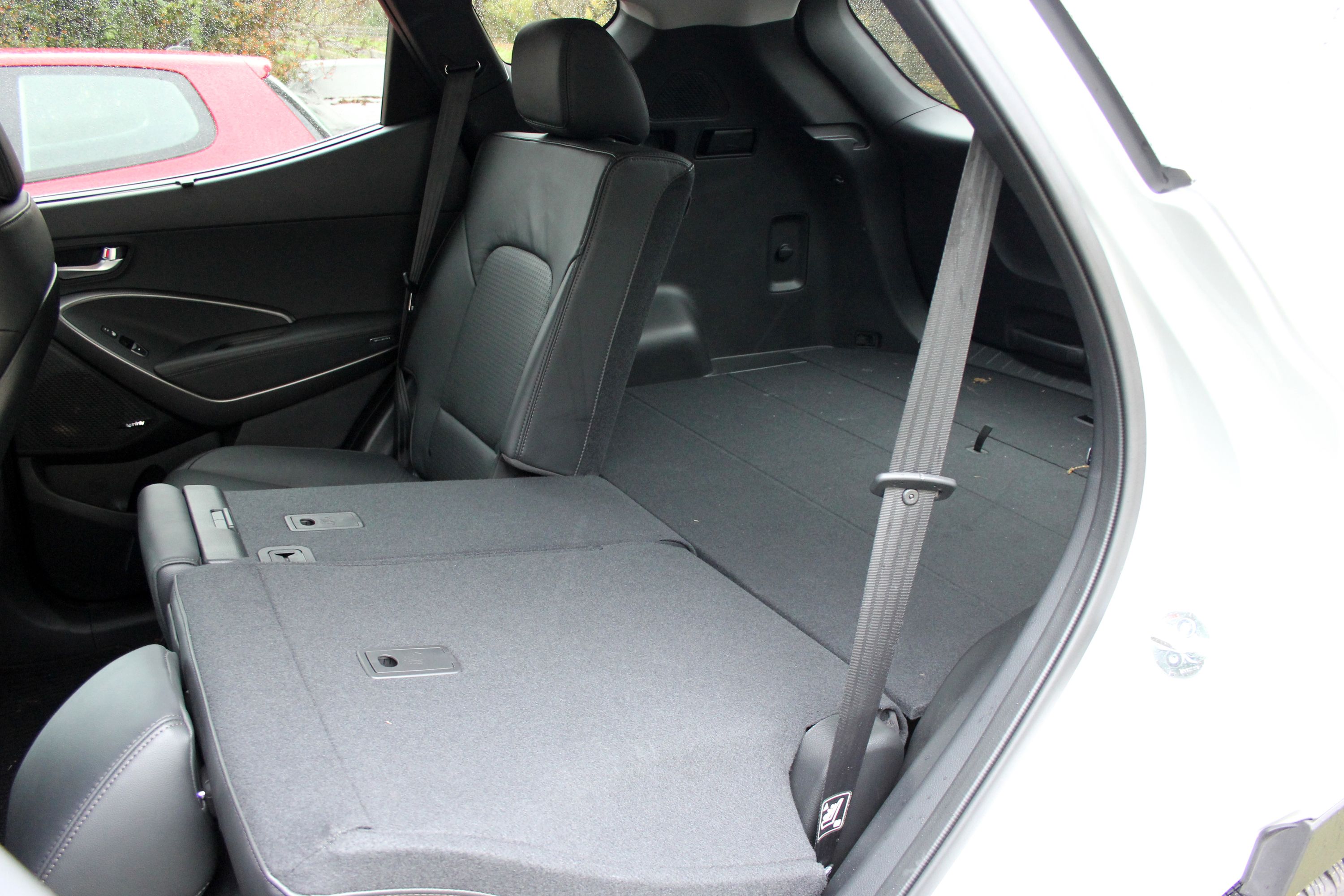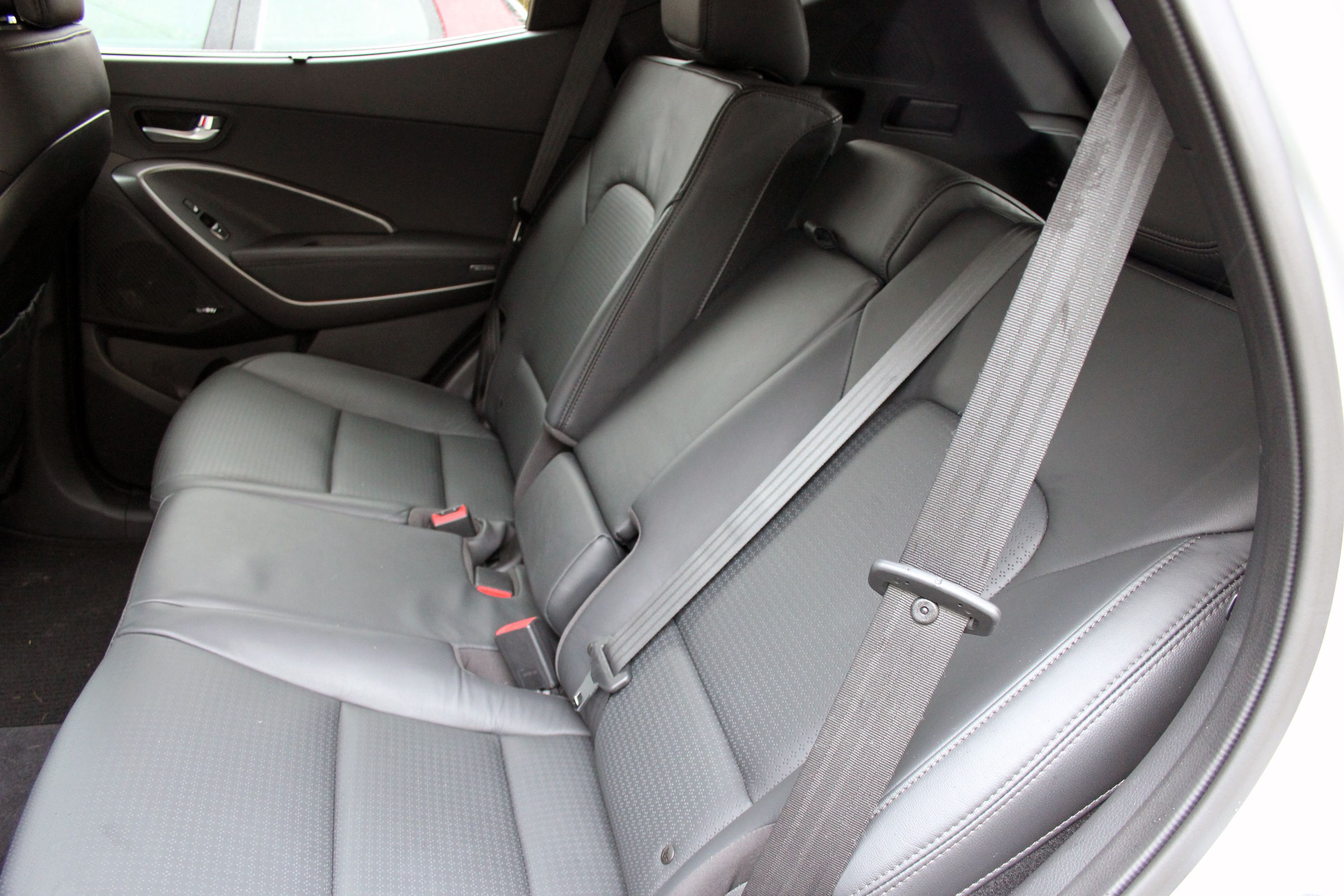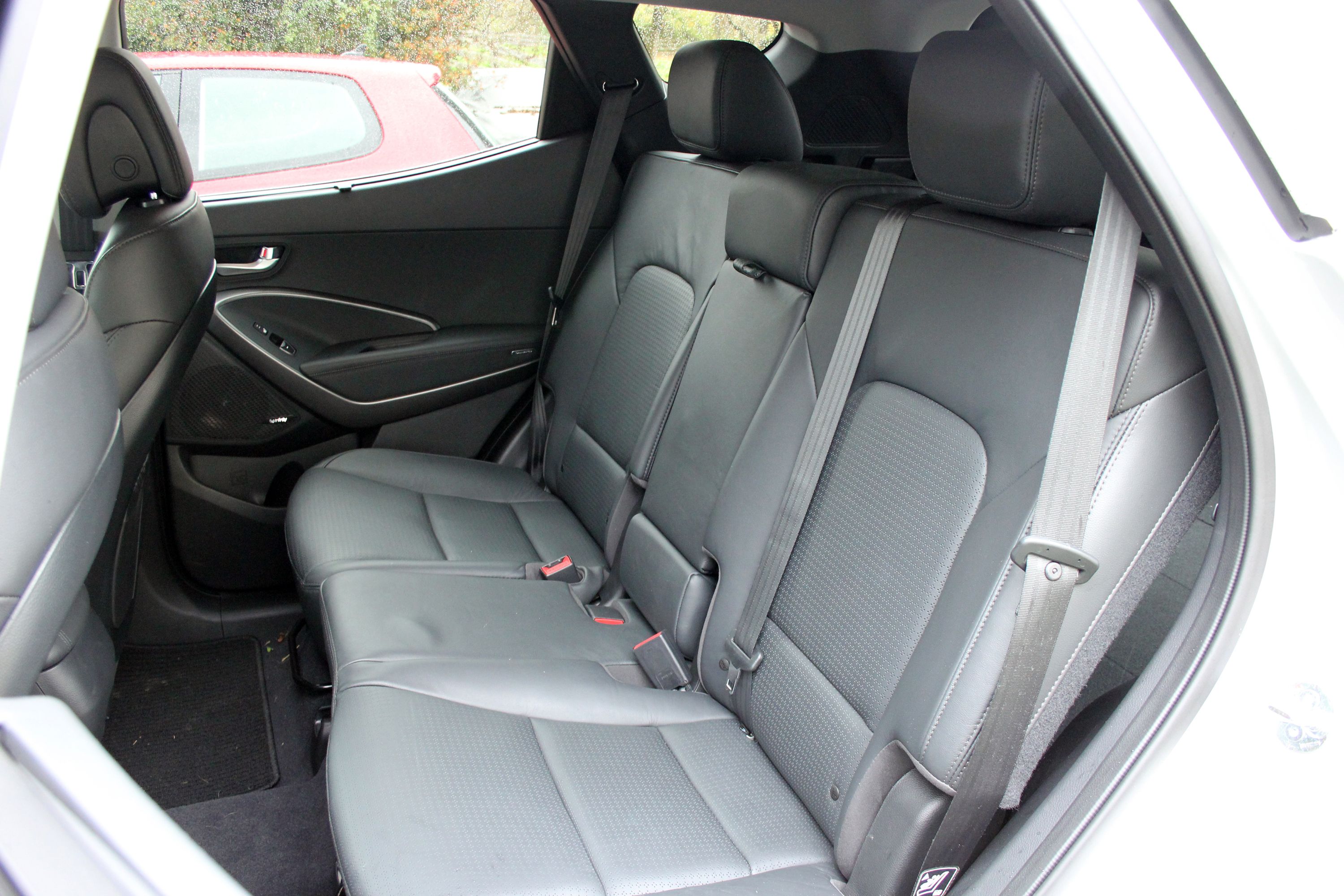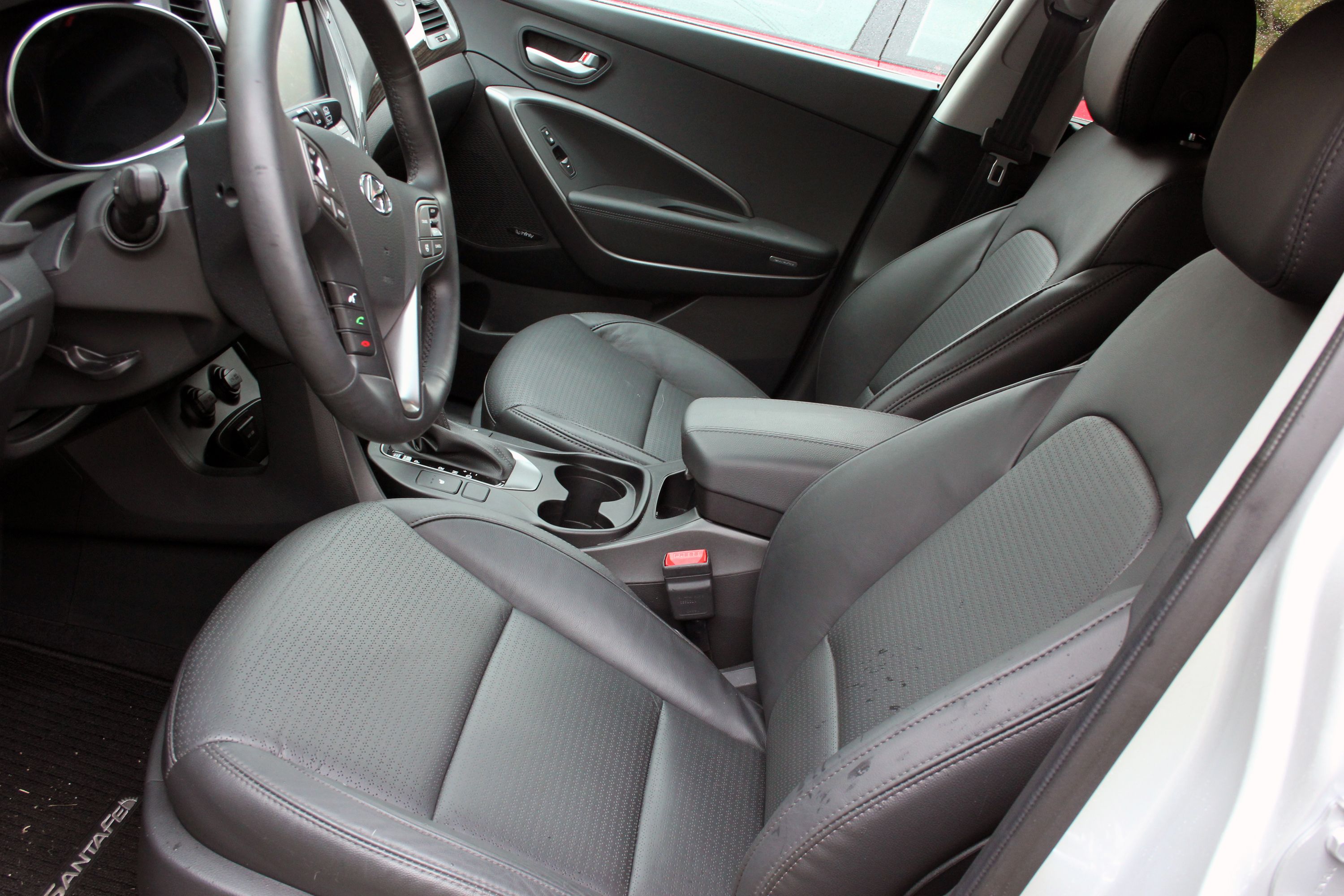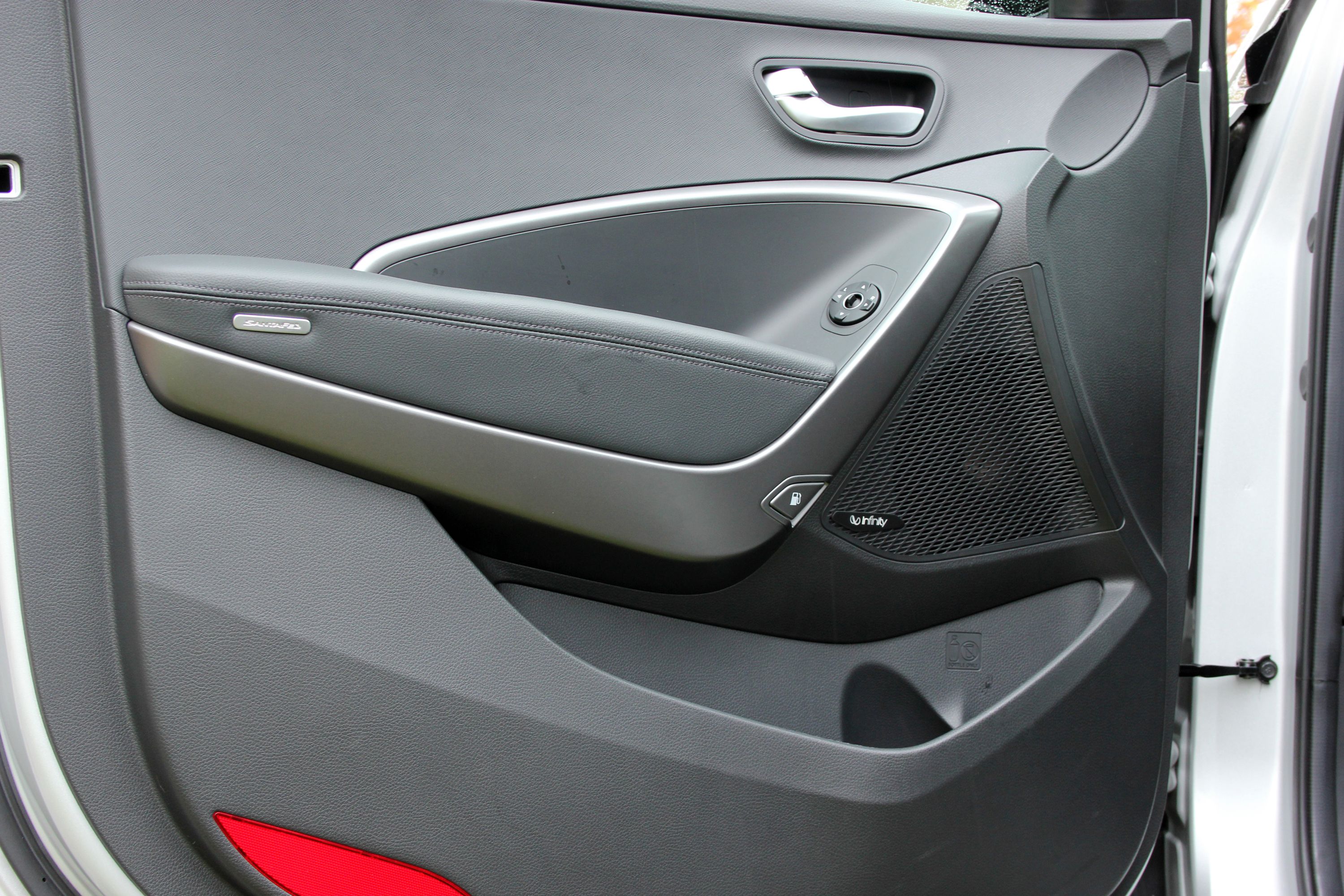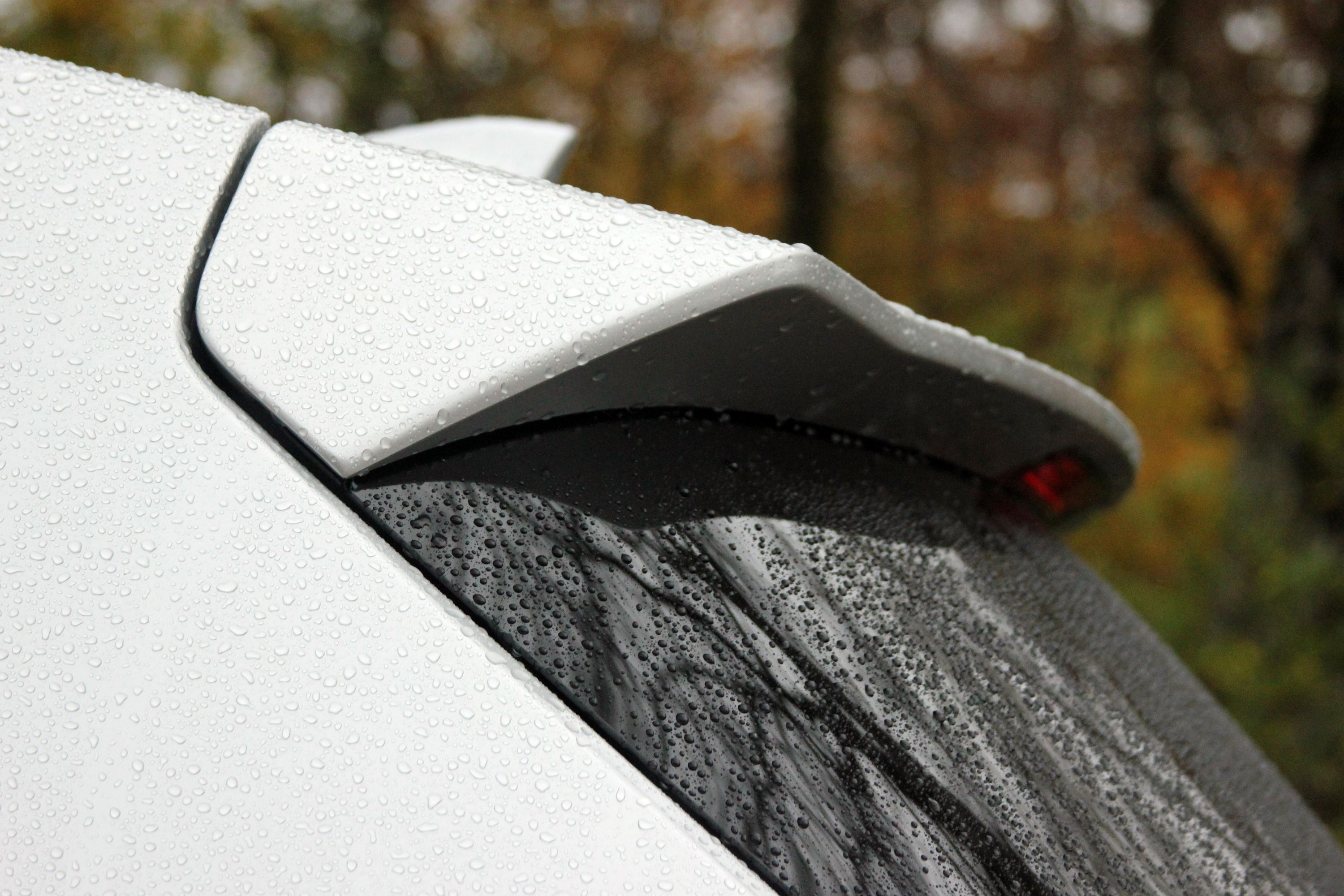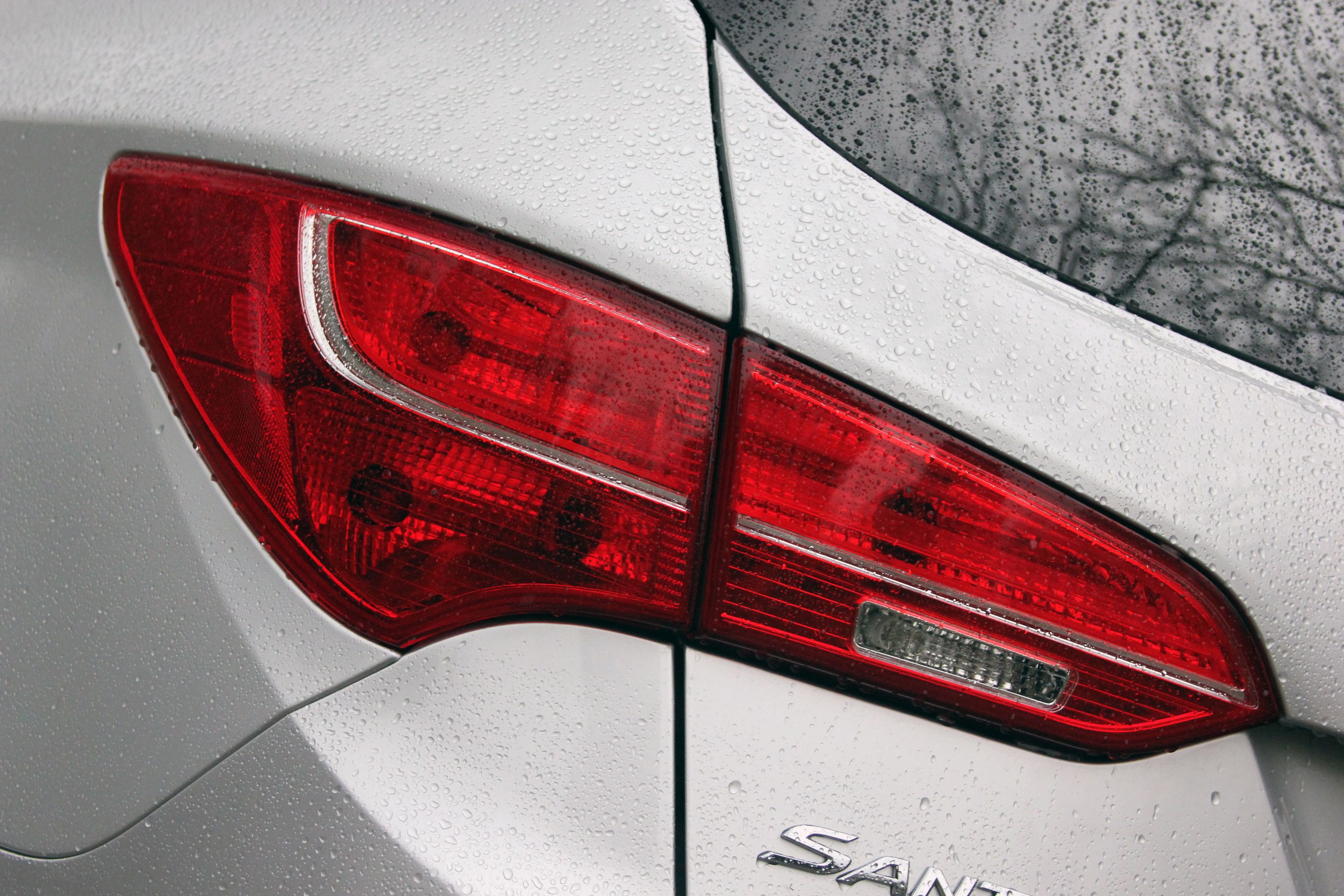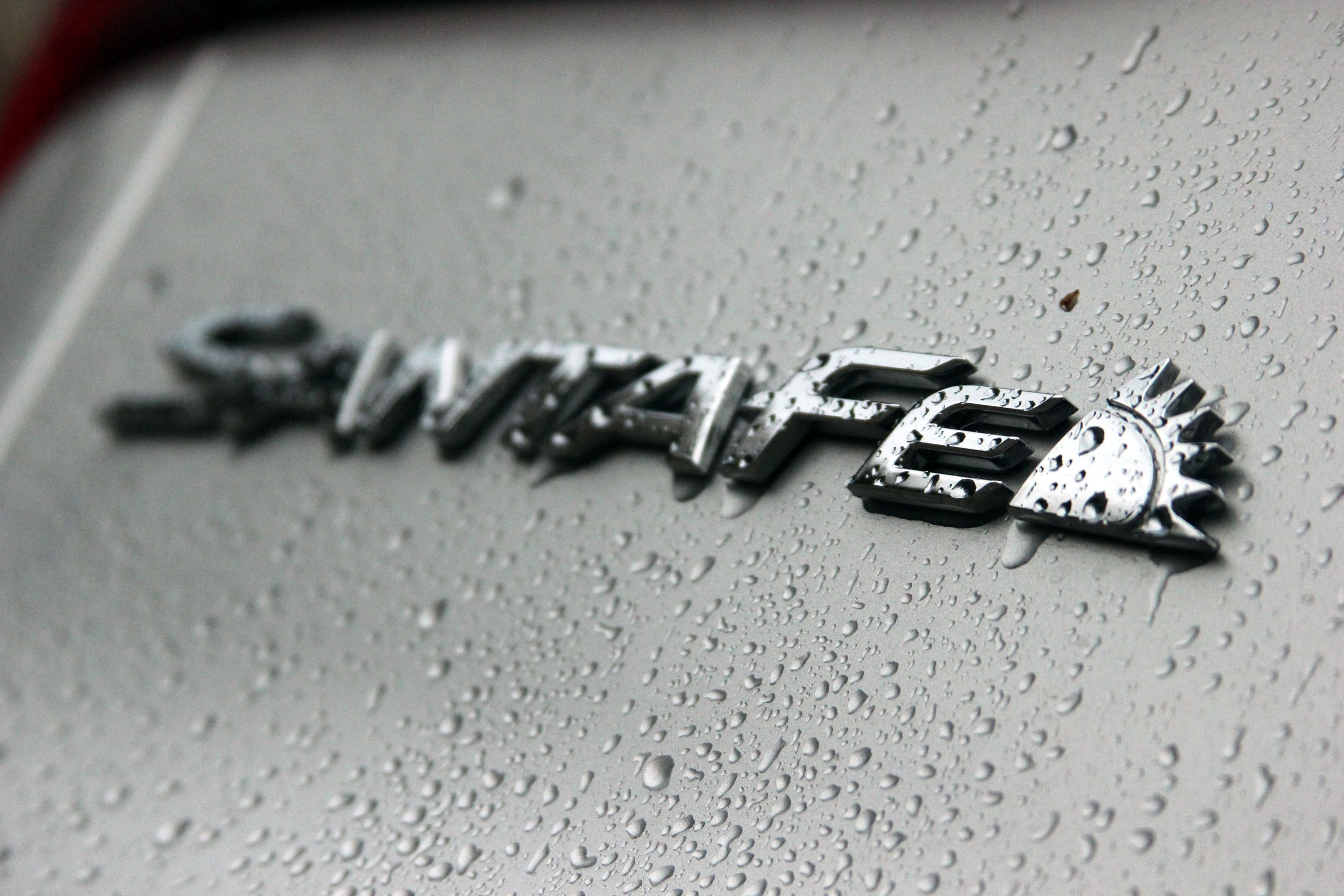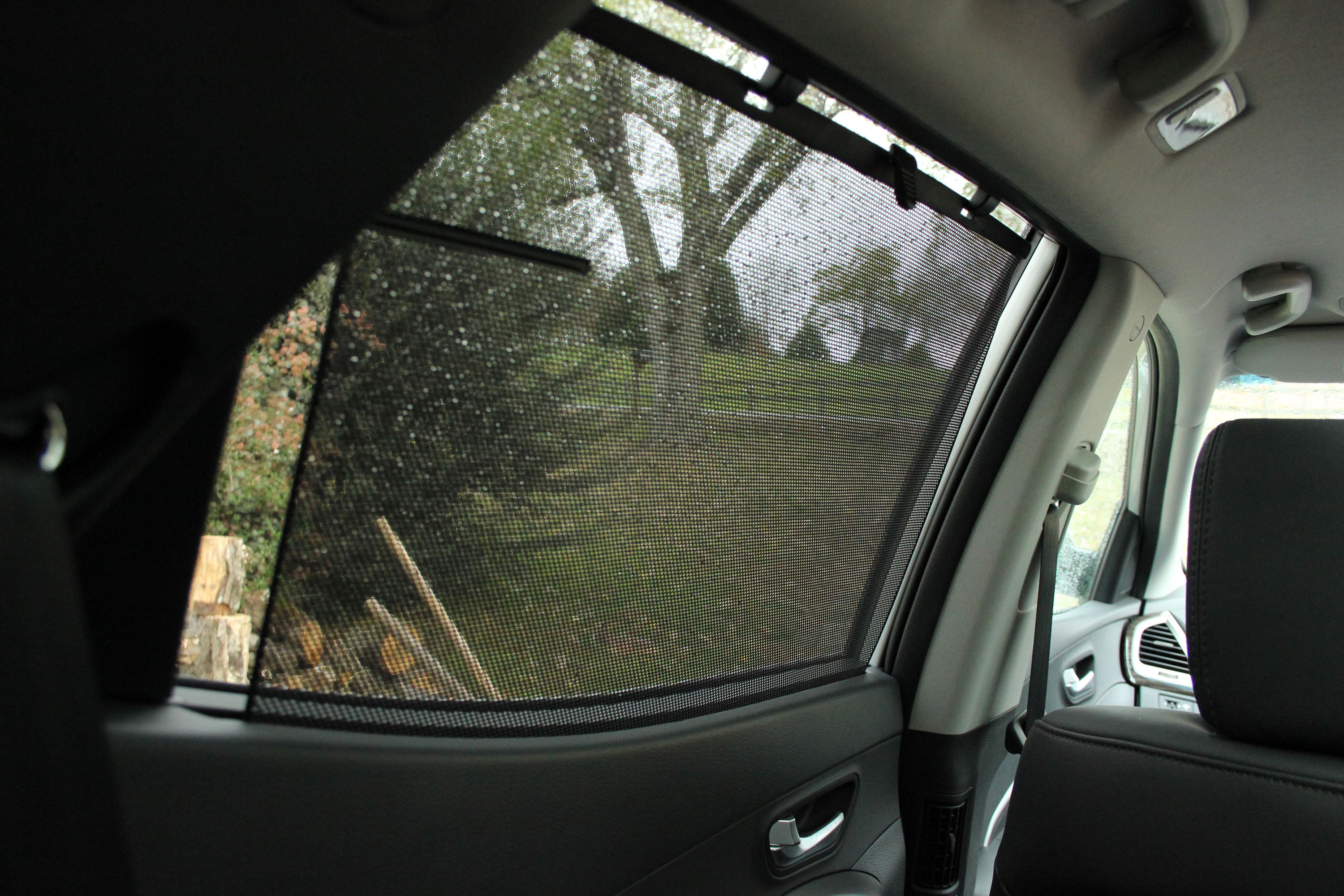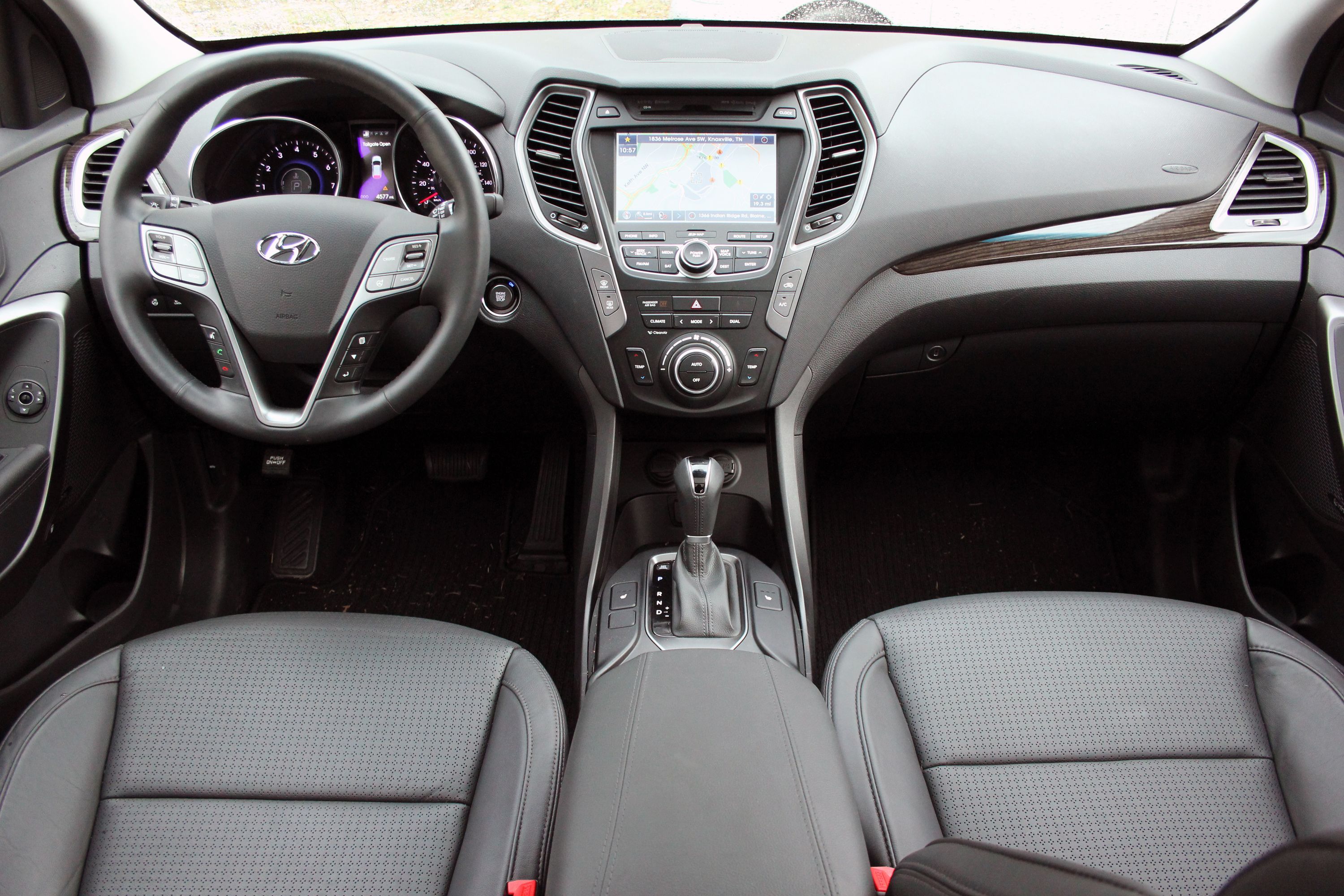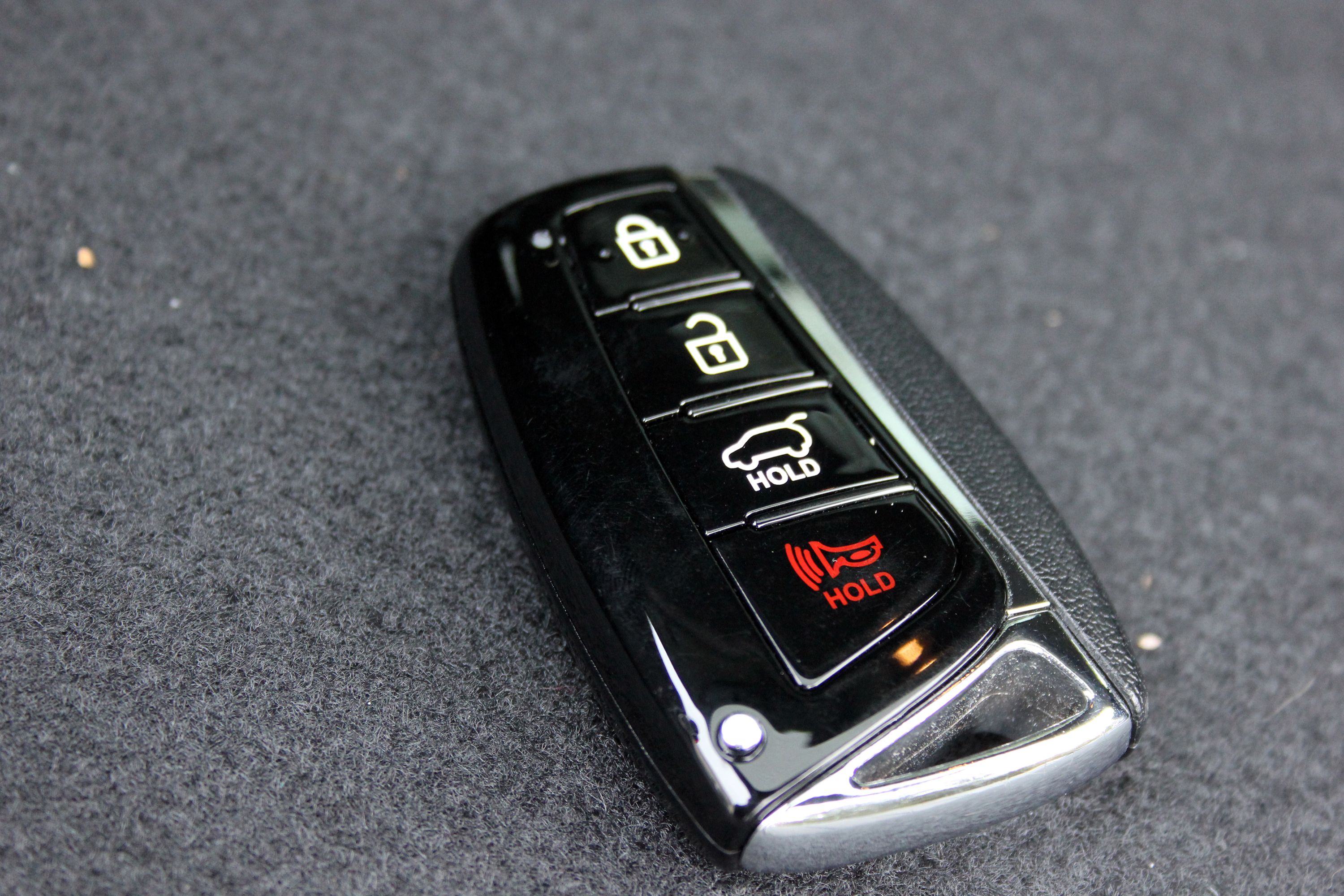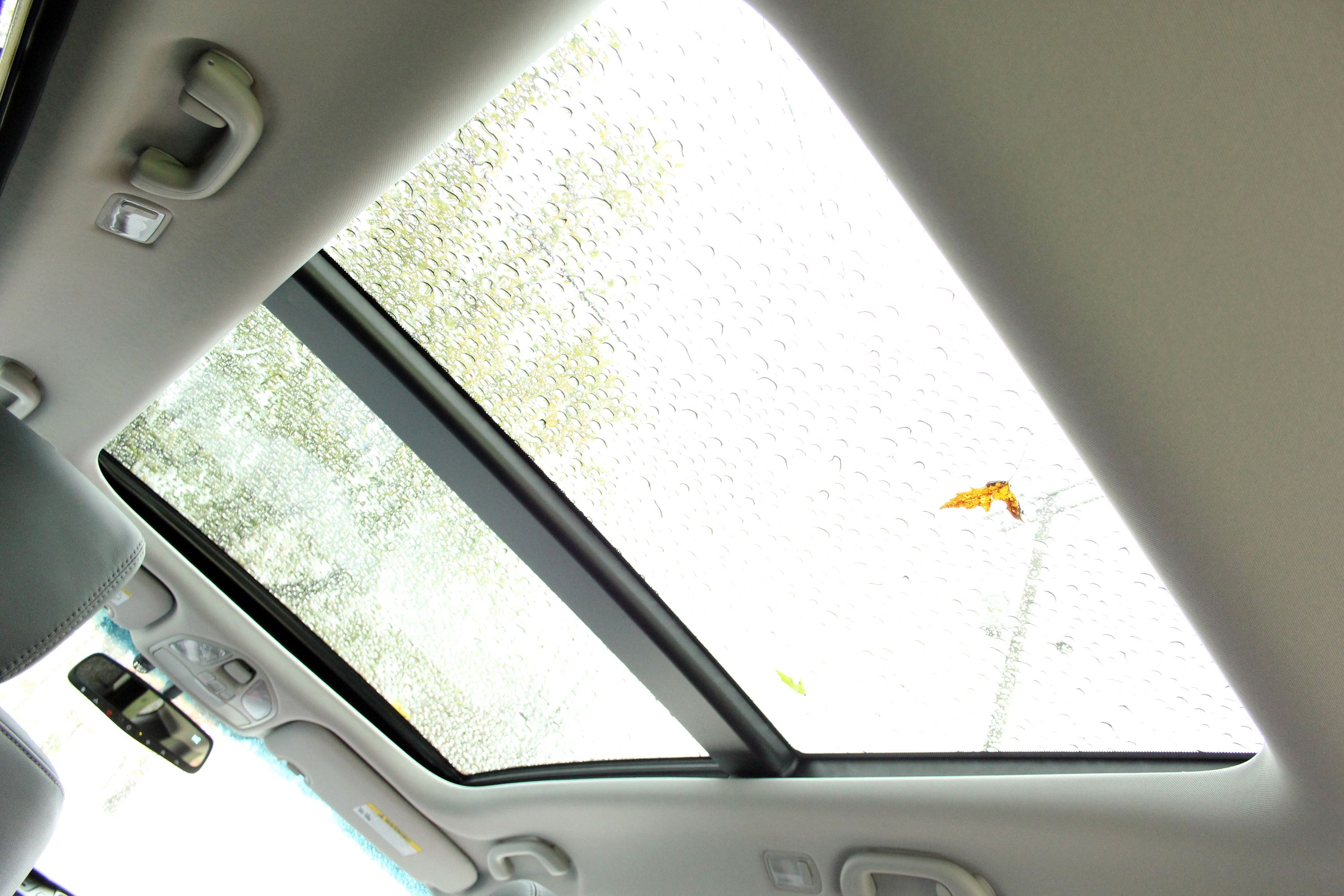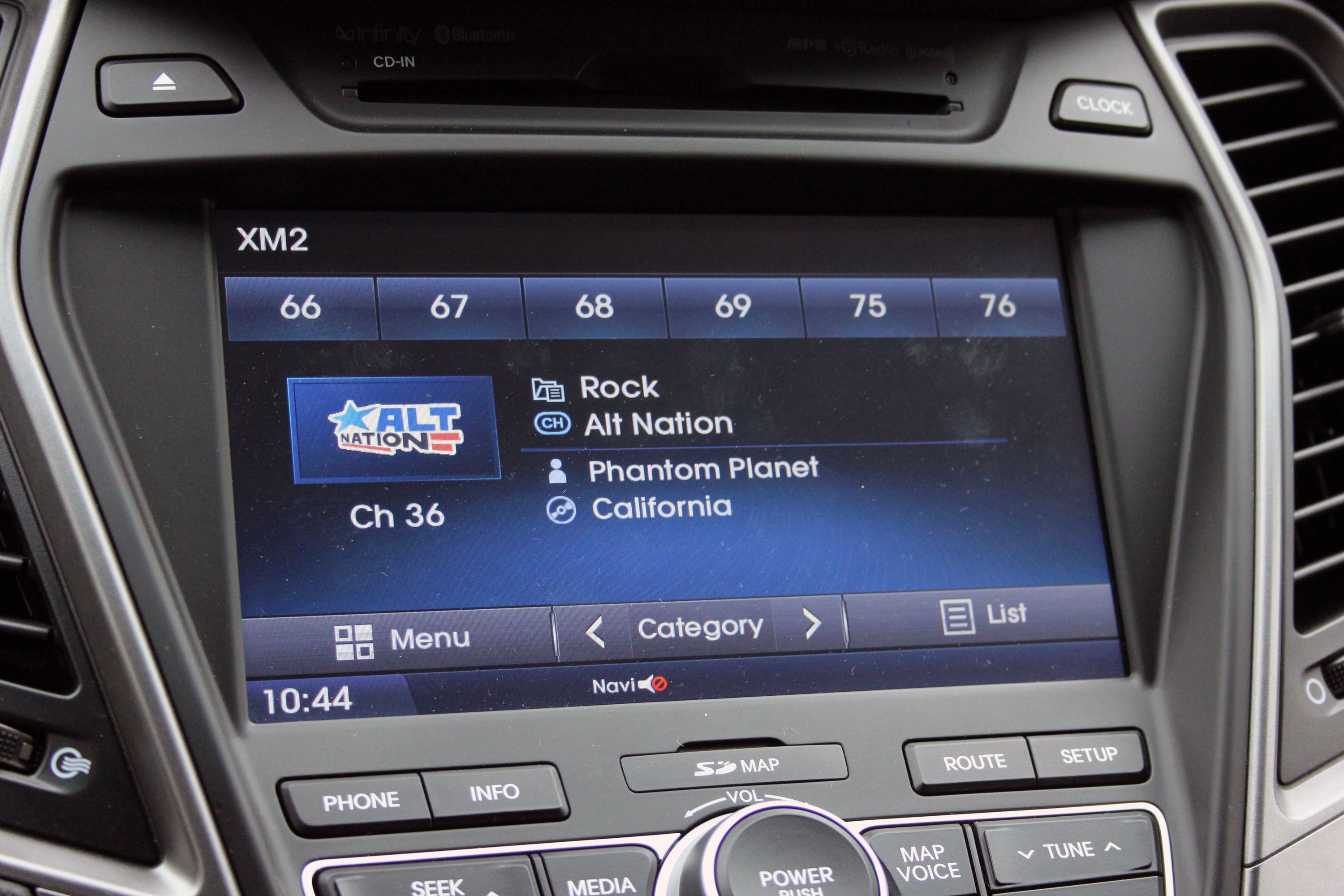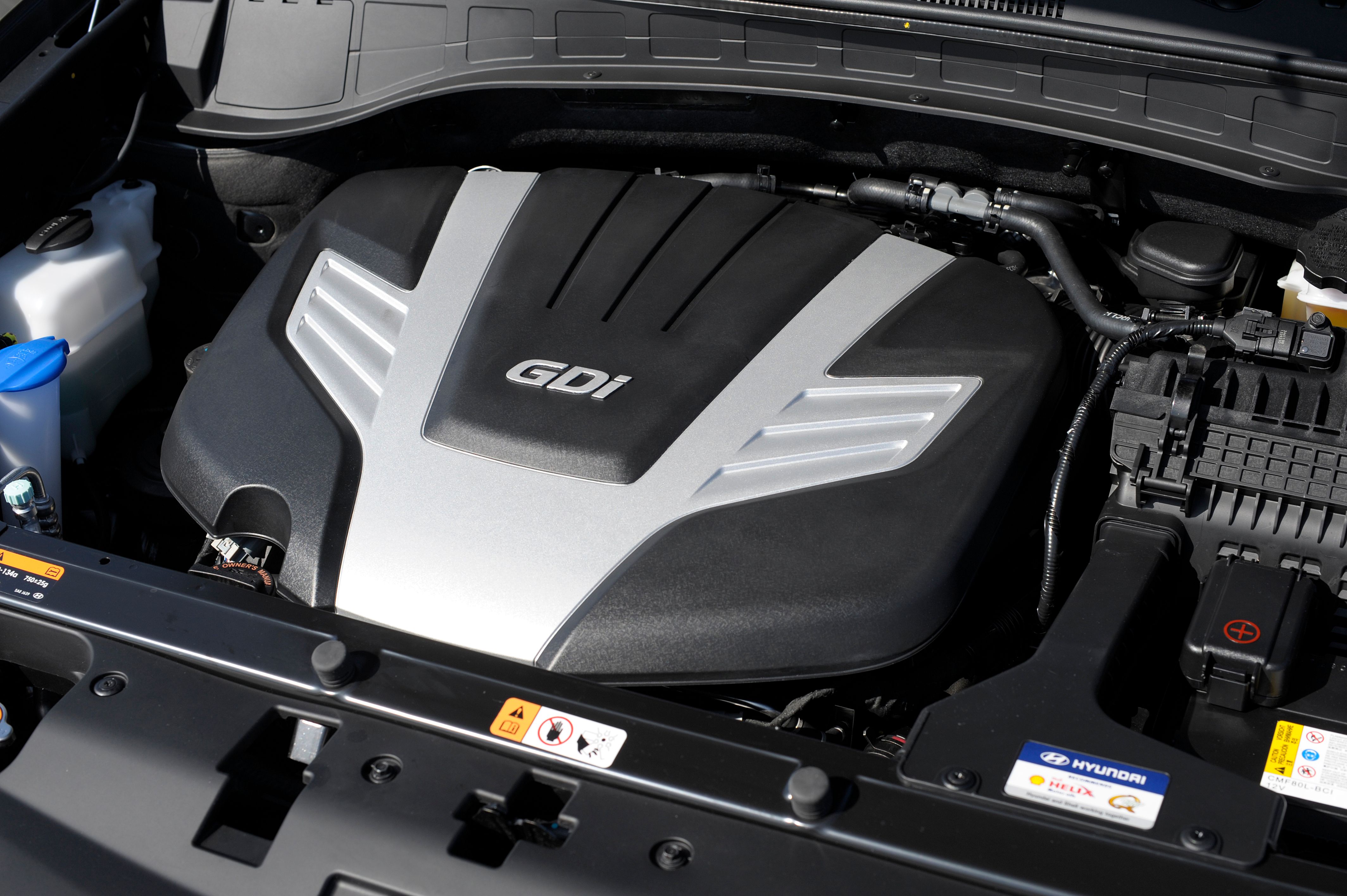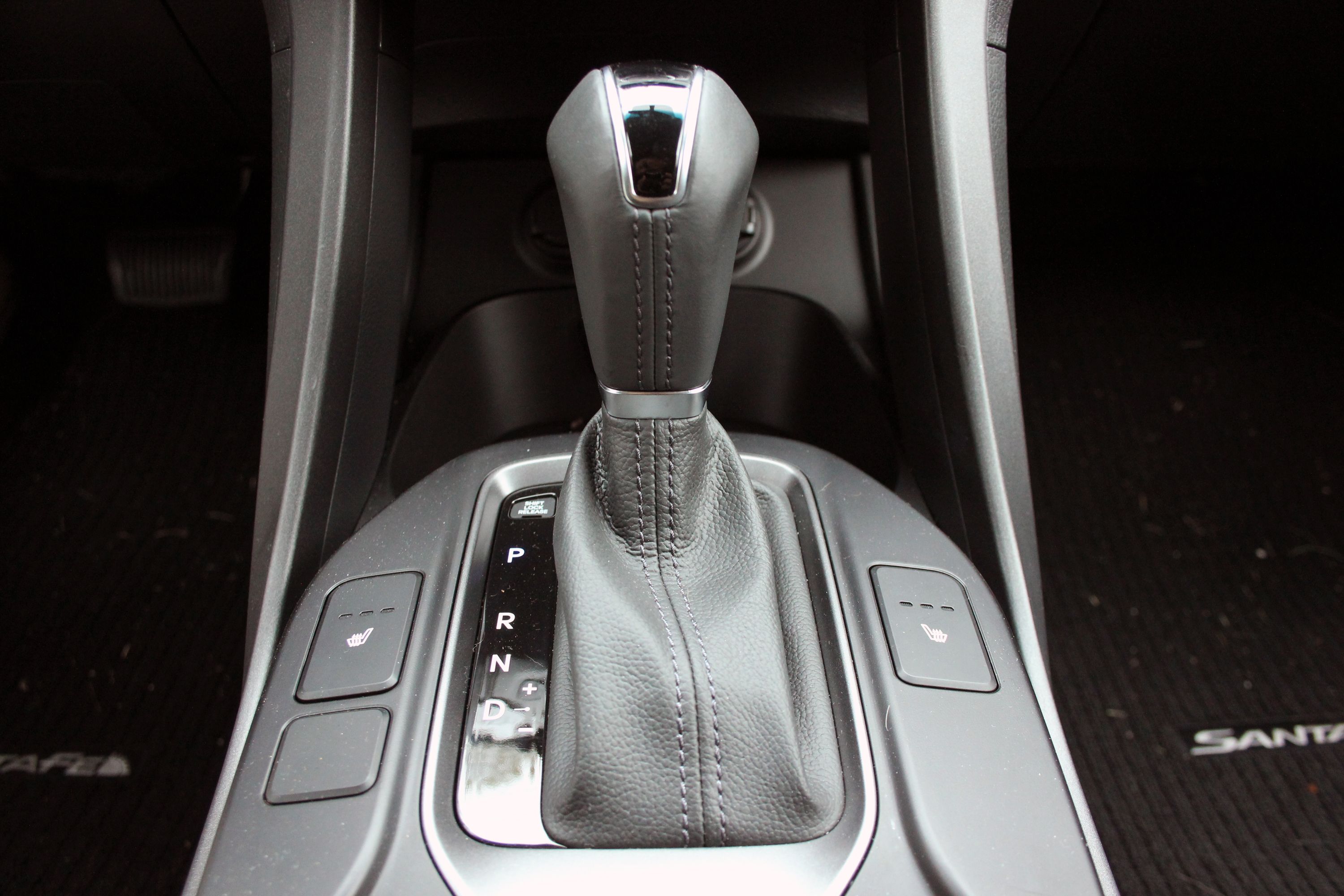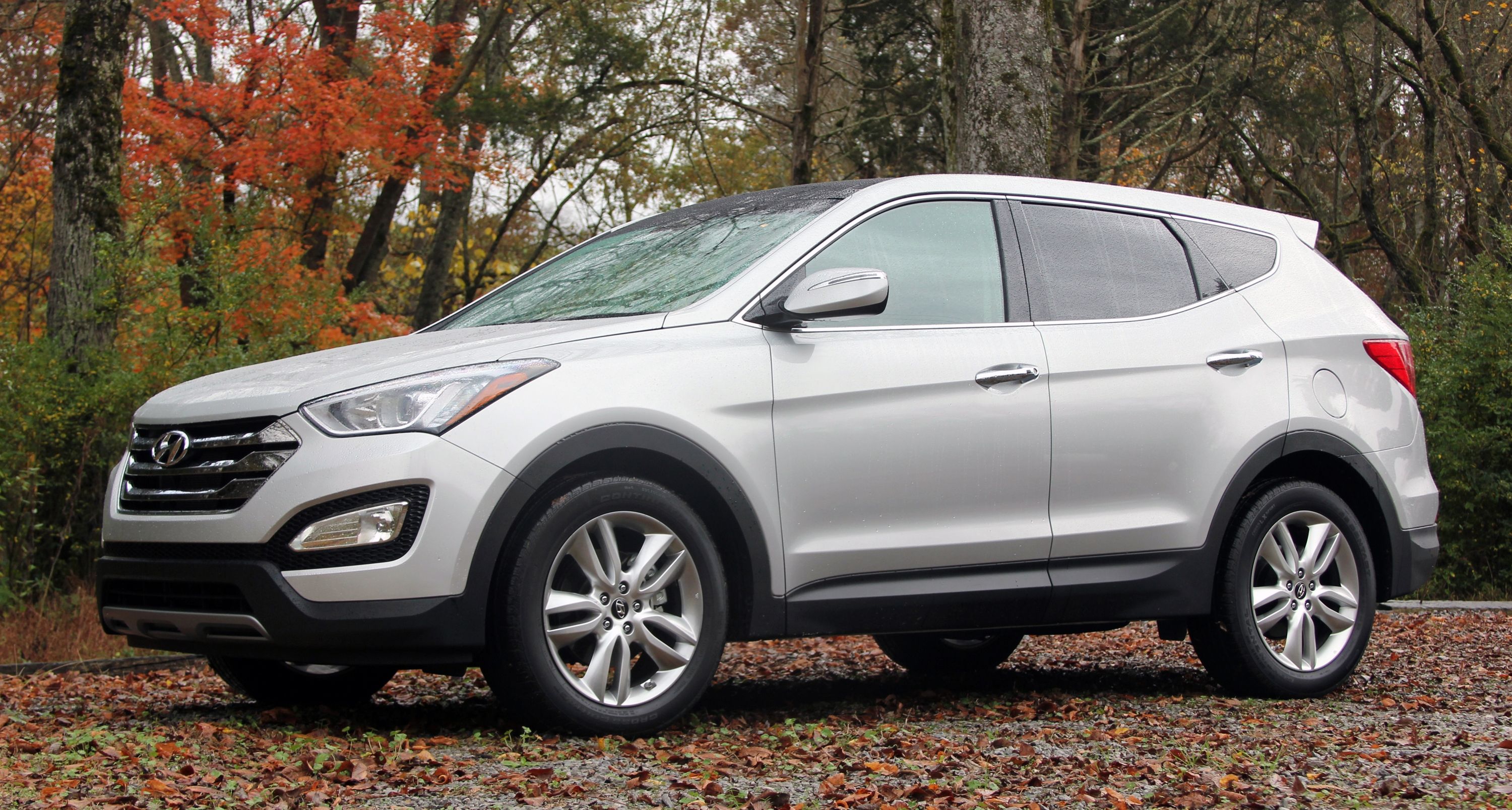In the crowded world of family-hauling SUVs,->ke145 there are literally dozens of “me-too” options that scream out with their boring designs and ho-hum driving dynamics. A field of minivan->ke1149 replacments that are packed full of so many compromises that they fail to excel at any single thing. Despite this, there is one crossover that continually surprises me with both its competence and its quality. That is the 2014 Hyundai Santa Fe Sport.
The Santa Fe Sport is the smaller, two-row version of the Santa Fe. It competes directly with machines like the Toyota Venza,->ke2985 the Chevrolet Equinox and the Subaru Outback,->ke1052 but it does so with a dash of style and value that those others can’t match. When equipped with the optional 2.0-liter, turbocharged engine, it is also a quick performer.
But this Santa Fe Sport doesn’t have the turbocharged motor. It also doesn’t have AWD. In fact, aside from a few equipment options, this Santa Fe Sport the lowest-trim version you can buy. Will the less-powerful, 2.4-liter engine and lack of AWD ruin my feelings about the car? Without the speed and grip, is it still a good match for those competitors? After a week of driving, and a few hundred miles on the clock, I think I have the answer.
Read on to find out more about the 2014 Hyundai Santa Fe Sport.
2014 Hyundai Santa Fe Sport - Driven
- Make: Array
- Model: 2014 Hyundai Santa Fe Sport - Driven
- Engine/Motor: inline-4
- Horsepower: 190
- Torque: 181
- Transmission: 6-speed auto
- [do not use] Vehicle Model: Array
Note: Videos are of driven unit, photos are from a Turbo model tester.
Exterior
The Santa Fe Sport is not only one of the best-looking cars in the Hyundai stable, I think it’s one of the better looking crossovers in the segment. The bold, flat face is accentuated by the crisp and angular lines that make up the grille and headlamp housings, and the intelligent use of chrome and dark plastics add a sense of performance and modernity. The profile is lengthened by darkened center window pillars, and the upward swing of the rearmost section of glass is a wonderful touch. The painted mirror caps, chrome accents and large alloys all add up to make things look more luxurious than the price tag would usually allow.
Even the rear of the Santa Fe Sport, traditionally a styling weak point in SUVs and crossovers, has some nice design details. The blade-shaped tailamps, with their thin, white line splitting them look futuristic and unique, while the two-tone, plastic lower bumper that looks like a diffuser and the large roof spoiler add an extra bit of aggression to the overall package.
Every time I see a Santa Fe Sport on the road, I am reminded how much I like it, and just how handsome it really is. Most of Hyundai’s current designs feel overwrought and destined to look dated quickly. The Santa Fe is almost German in its restraint and clean details.
Interior
Inside, the Sport shows that same focus on creating a look that is restrained and functional while still retaining a touch of beauty. The dual cockpit design uses long flowing lines that arc away from the front passengers to open up the feel of the cabin. All of the plastics are of high-quality, and everything has a great texture. Many of the major touch points are covered in soft-touch rubber or leather, and the wood-inlay trim looks quite upscale. The weak spots in the look and feel are the shiny bits. The silver trim around the center console and on the doors looks good, but feels a little cheap, especially in comparison to the other materials.
Our tester came equipped with a few of the extra luxury goodies, so we had perforated leather seats that were heated and cooled, and we had that massive sunroof. That slab of glass in the roof is easily one of my favorite features of the Santa Fe. Not only is it one of the largest sunroofs you can get in the segment, it is also one of the largest sunroofs of any vehicle in regards to glass-to-roof ratio. The power operated shade is quick to activate, and the open skylight adds a massive amount of light to the inside.
Rear seats are comfortable for adults of almost any size thanks to their ability to slide and recline. If you have little ones, or if it is just a very bright day outside, both rear passenger seats have manual sunshades built in. If you live in cold climate, you will be happy to know the rear seats are also heated. When it comes to space, the Santa Fe Sport rocks a full 35.4 cubic feet with the second row upright. Drop them flat and you have a fairly cavernous 71.5 cubes.
Drivetrain
While the Santa Fe Sport is available with a powerful 264-horsepower, turbocharged engine, our tester came with the base level 2.4-liter inline-four. This engine produces a modest 190 horsepower and 181 horsepower. That engine comes mated to a six-speed automatic transmission as standard and all that power is sent to the front wheels exclusively. There is an AWD model available for those who desire a bit more foul weather traction.
Fuel economy is rated 20 mpg city and 27 mpg highway with a combined rating of 23. During my time I saw an average of around the 25 range in mixed driving, with high 26s when I focused my time on the highway. It’s not stellar, but it is on par with the segment, and more importantly, it follows the sticker closely.
Pricing
The standard price of a Hyundai Santa Fe Sport with FWD and the base 2.4-liter engine is a very reasonable $24,950. Our car was fitted with a few options that included the $1,150 Popular Equipment Package. This sees the addition of roof rails, heated exterior mirrors, front wiper de-icer, automatic headlamps, fog lights, leather steering wheel and shift knob, and the addition of heated front seats with power adjustment for the driver’s throne. Our car also came with the Premium Equipment package. This added blind-spot monitoring, smart keyless entry with push-button start, leather seats, dual-zone climate, the sliding/reclining rear seats and the rear sunshades. This carried a price of $3,200. Our final big option included the Technology Package. This brought the panoramic sunroof, satnav, seat ventilation, rear seat heaters, upgraded audio system and the heated steering wheel. This package carried the same $3,200 price as the Premium Package.
After a few minor items like carpeted floor mats and the destination charge, our tester rang up with a final price of $33,500.
Driving Impressions
When I drove the turbo-equipped Santa Fe, I had a hard time adjusting to the transmission setup. The car seemed to want to downshift any time I went anywhere near the throttle. With such a high-strung, turbo engine, that meant immediate power, torque steer and acceleration. It was off-putting how quickly the car would downshift on mild throttle inputs, and then when you let of the throttle, the car was immediately trying to get to the highest gear possible to save fuel. If you were in traffic and on a grade the result felt like trying to ride an accordion. Thankfully, I had no issue with this Santa Fe Sport’s 2.4-liter. The naturally aspirated mill was down on power, but the engine is willing, and it responds exactly as expected. The result is a driving experience that is not overly sporty, but is predictable and enjoyable.
Suspension tuning for the Santa Fe Sport is on the “sportier” side of things. Body roll is still present, but it is far better managed than expected and rough-surface comfort has not been sacrificed. It was a nice change when compared to most SUVs that wallow around the road like they are being steered with a rudder. I am sure that there are some who may find the ride is a bit harsh, but I find it to be that perfect middle ground.
I also enjoy the Santa Fe Sport’s six-speed auto. While rowing my own will always be preferable, having a true automatic versus a CVT like I had in the Subaru Outback made for a better experience. The shifts are quick and crisp, and no matter what kind of driving I was doing, the auto-box was a willing partner. Never once did it falter on giving me the gear I needed. If you are the type of person who enjoys using the “manual shift” functions on your automatic cars, stay away from this one. While the box is great on its own, shift times are a bit excessive when you try telling it what to do.
Overall I prefer this Santa Fe to almost any other version I have driven. The larger, three-row model is too big and heavy, and I dislike the twitchy and high-strung nature of the turbo. The Sport with the 2.4 finds that perfect middle ground of performance, livability and fuel economy.
Competition
Subaru Outback
The all-new 2015 Subaru Outback is the largest, most mainstream machine that the quirky Japanese company has ever made. What used to be an aggressive AWD wagon is now a full-blown family SUV. Compared to the Santa Fe Sport, the two exhibit a classic back-and-forth in regards to equipment and features. The Outback is more fuel efficient and has AWD, but the Santa Fe is more powerful and has a real transmission. When equipped to an equal level the Outback comes with bonus goodies like Lane Keep Assist, but the Santa Fe has rear sunshades and ventilated front seats. Both offer navigation and sunroof options, but the Santa Fe’s are bigger on both accounts.
Even in regards to spacing and sizing they are nearly identical. The Subaru has a small amount more overall cargo space, but the Santa Fe will cost you a few hundred dollars less. For my money, I prefer the look, horsepower, six-speed auto and driving dynamics of the Santa Fe Sport to Subaru’s former wagon. On paper the two are very close.
Chevrolet Equinox
The Chevrolet Equinox has been one of the best-selling cars in the Bowtie’s lineup for a while. It was one of the first crossovers to crest the 30-mpg mark on the highway, it is relatively well-equipped, and it is aggressively priced. If you try to line up an equivalent model to the Santa Fe, it will ring up at almost $1000 cheaper, but you lose some equipment in the transition. Items like ventilated front seats, the panoramic sunroof and the rear sunshades are non-existent on the Equinox, which helps off-set the price advantage the Chevy enjoys. If you want to spend some extra cash, you can get your Equinox with some pretty cool exclusive tech items like a 4G LTE Wi-Fi hotspot in the car.
From a performance perspective the Equinox’s 2.4-liter is identical in size to the Santa Fe Sport, but it comes in eight-horsepower short with only 182 ponies to the Hyundai’s 190. It does at least come with a real six-speed auto to swap cogs for you. Fuel economy on the Equinox is nearly identical to the Santa Fe on the low end with a city rating of 22 mpg, but it gains the advantage on the highway with a rating of 32.
Conclusion
The 2014 Hyundai Santa Fe Sport is one of the most competent, well-equipped and competitively priced cars in its segment. When you add the rather handsome styling inside and out, as well as premium features like that huge sunroof, it is hard to argue against such a machine. The 2.0T version is a much faster and more powerful model, but if it was my money on the line, I would grab a naturally aspirated 2.4 just like I had here. The engine is willing and eager to get you where you are going, and the more natural power curve makes for smoother acceleration and an all-around better driving experience. If you are looking to pick up a five-seat machine like this (and you are still stubbornly avoiding the greatness that is the wagon) the Hyundai Santa Fe gets high marks and a solid recommendation from me.


